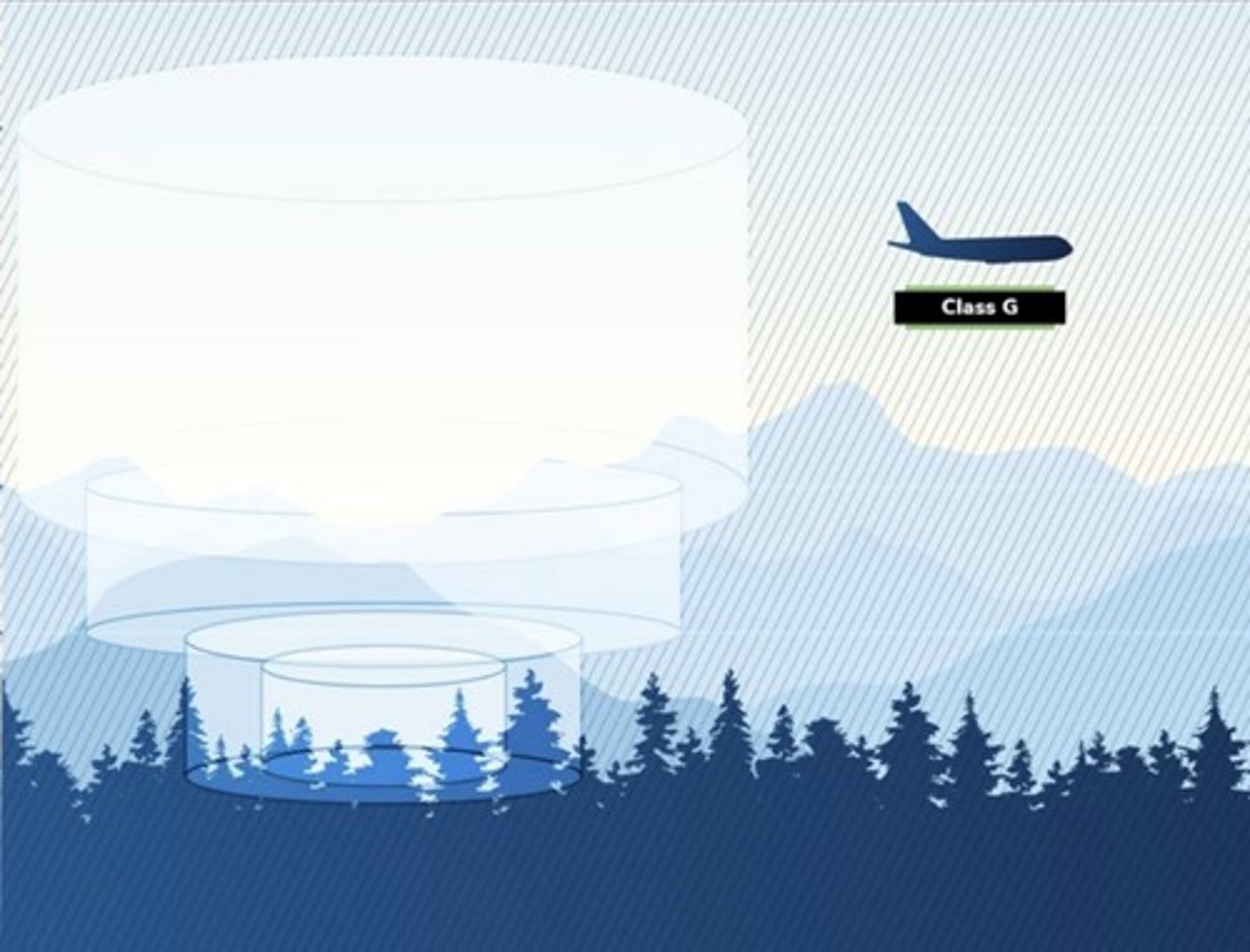Aviation Basics Course (ABC)
1/499
There's no tags or description
Looks like no tags are added yet.
Name | Mastery | Learn | Test | Matching | Spaced |
|---|
No study sessions yet.
500 Terms
Aerodrome
Any area that is used for the arrival, departure, movement or servicing of aircraft.
Airport
An aerodrome that has an airport certificate in force.
Phases of Flight
Departure, enroute, and arrival.

Runway
A defined path used for landing, departing and taxiing.
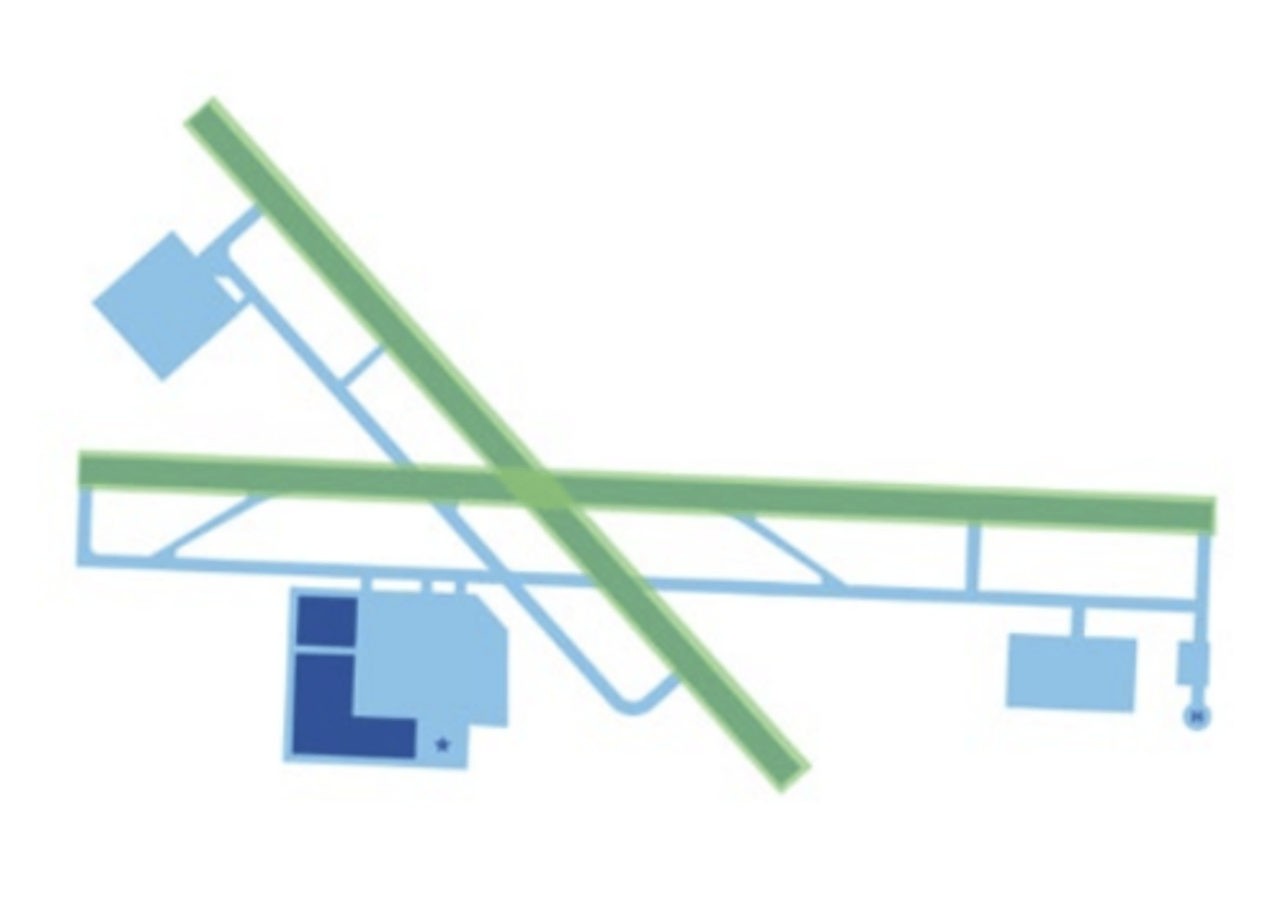
Taxiway
A defined path established for the taxiing of aircraft from one part of an airport to another.
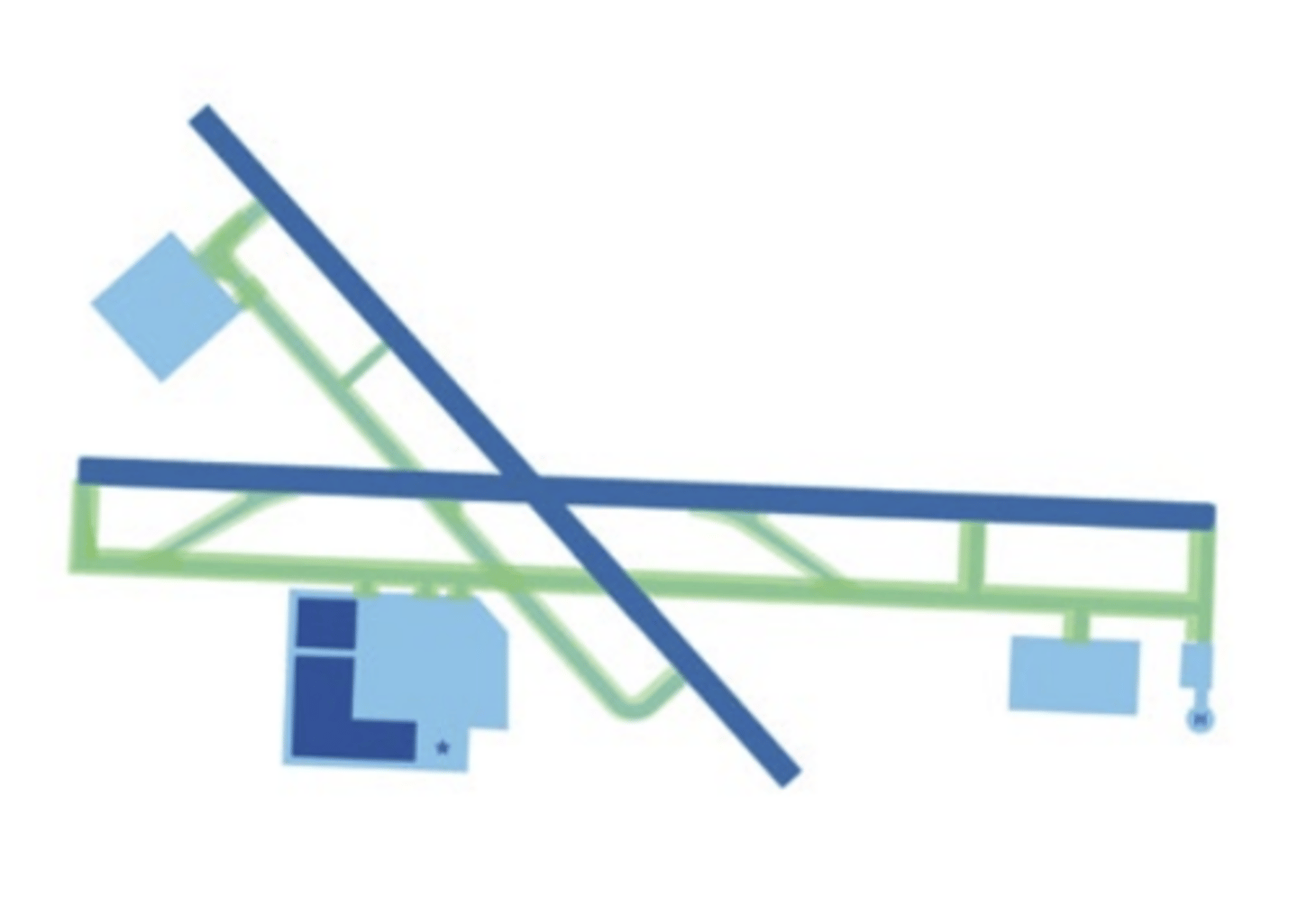
Apron
A part of the airport intended to accommodate the loading and unloading of passengers and cargo; the refuelling, servicing, maintenance and parking of aircraft; and any movement of aircraft, vehicles, and pedestrians.
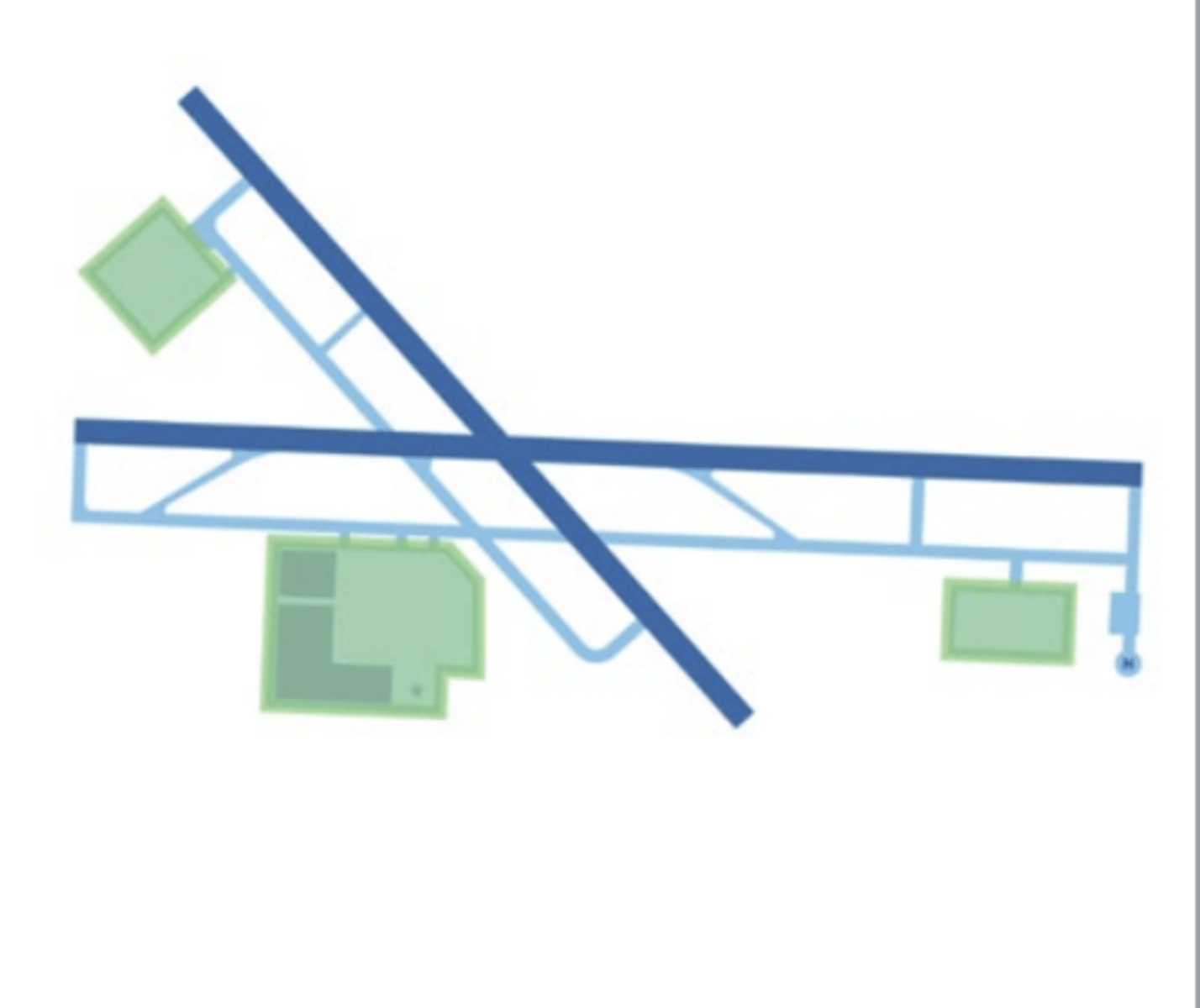
Intersection
Any point where any combination of runways and taxiways cross such as:
- two runways,
- a runway and a taxiway, or
- two taxiways.
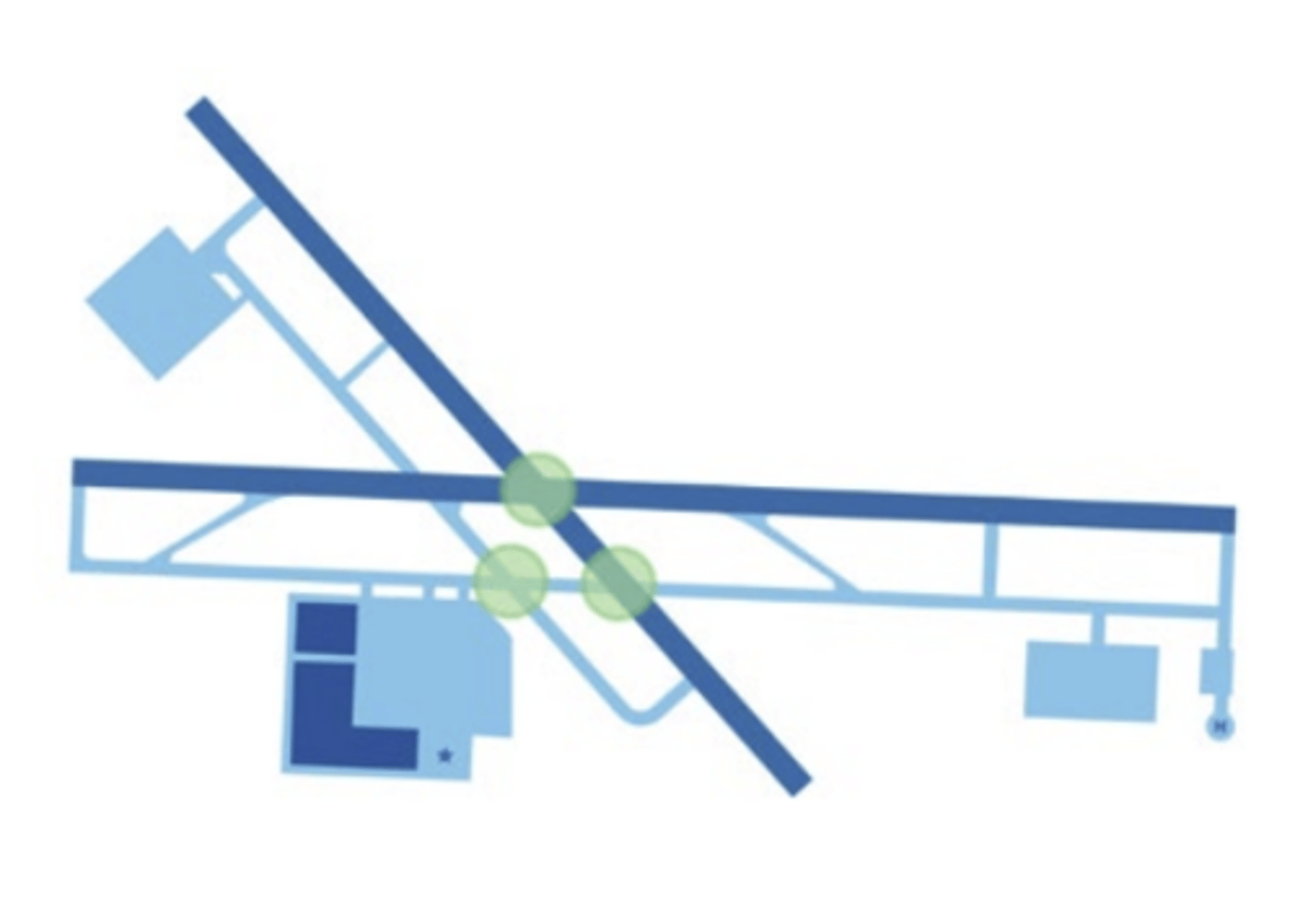
Manoeuvring Area
Used for the take-off, landing, and taxiing of aircraft, excluding aprons.

Helipad
An area, usually with a prepared surface, used solely for the takeoff, landing, or parking of helicopters. Can be on apron or separate.
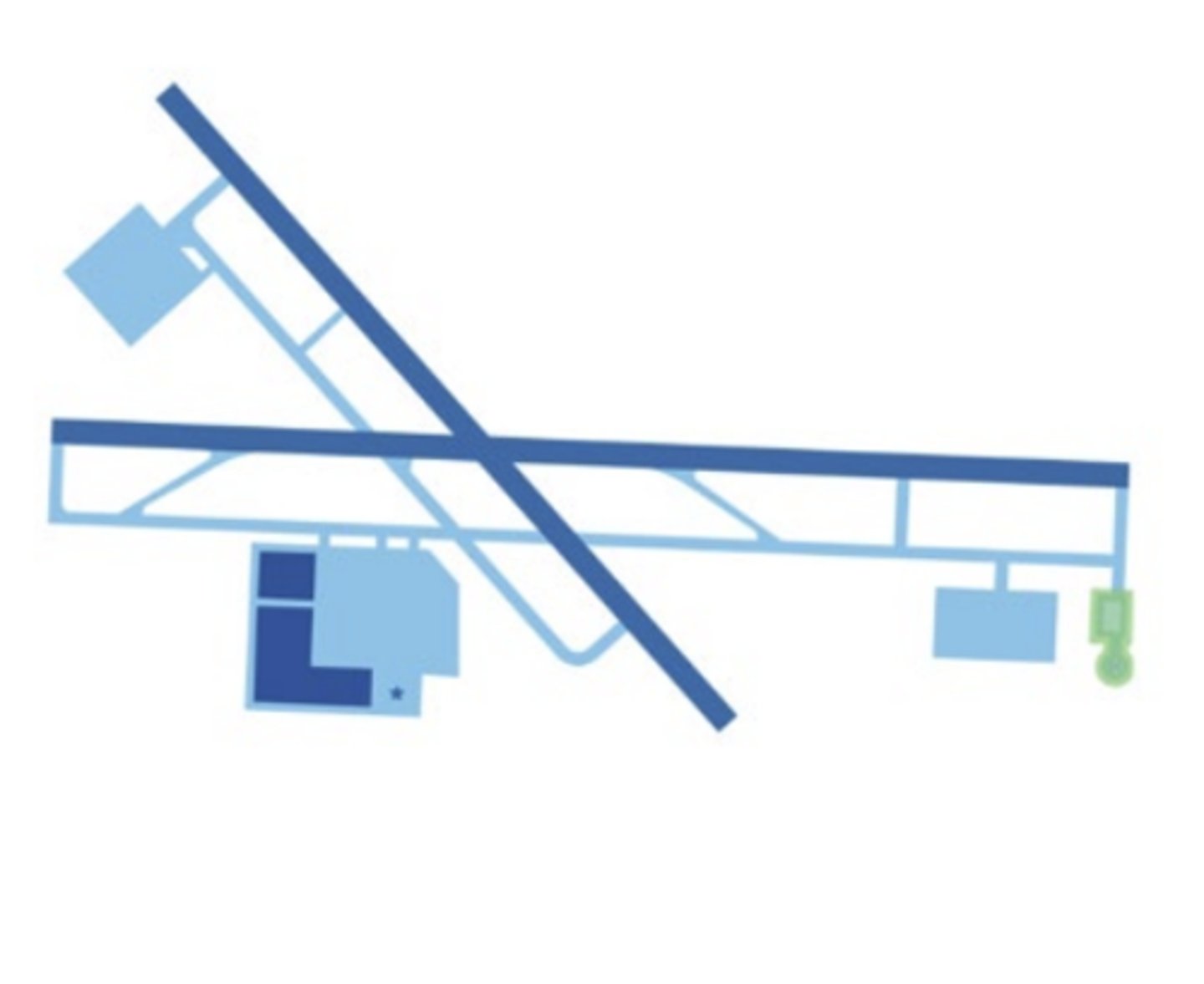
Movement Area
That part of an aerodrome to be used for the take-off, landing and taxiing of aircraft, consisting of the manoeuvring area and the apron(s).
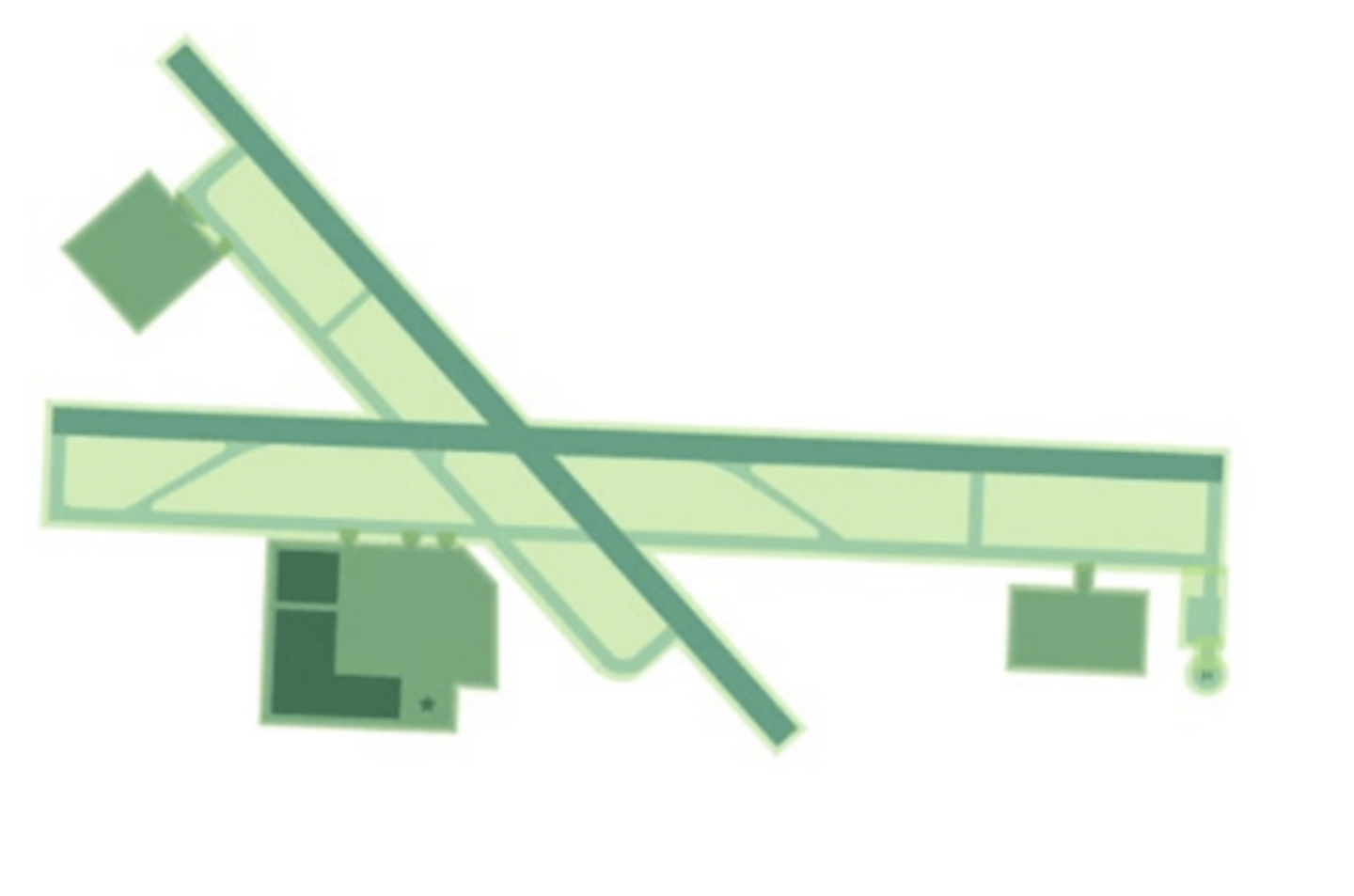
Ground Traffic
All traffic, other than aircraft, on the manoeuvring and runway protected areas, such as vehicles, equipment and personnel.
Flight service specialists have the authority to:
Issue instructions to vehicles only.
ATC have the authority to:
Issue instructions to both vehicles and aircraft.
Leg
A path ATC can instruct aircraft to fly.
Downwind Leg
Flight path parallel to the landing runway in the direction opposite to landing (normally extends between the crosswind leg and the base leg).
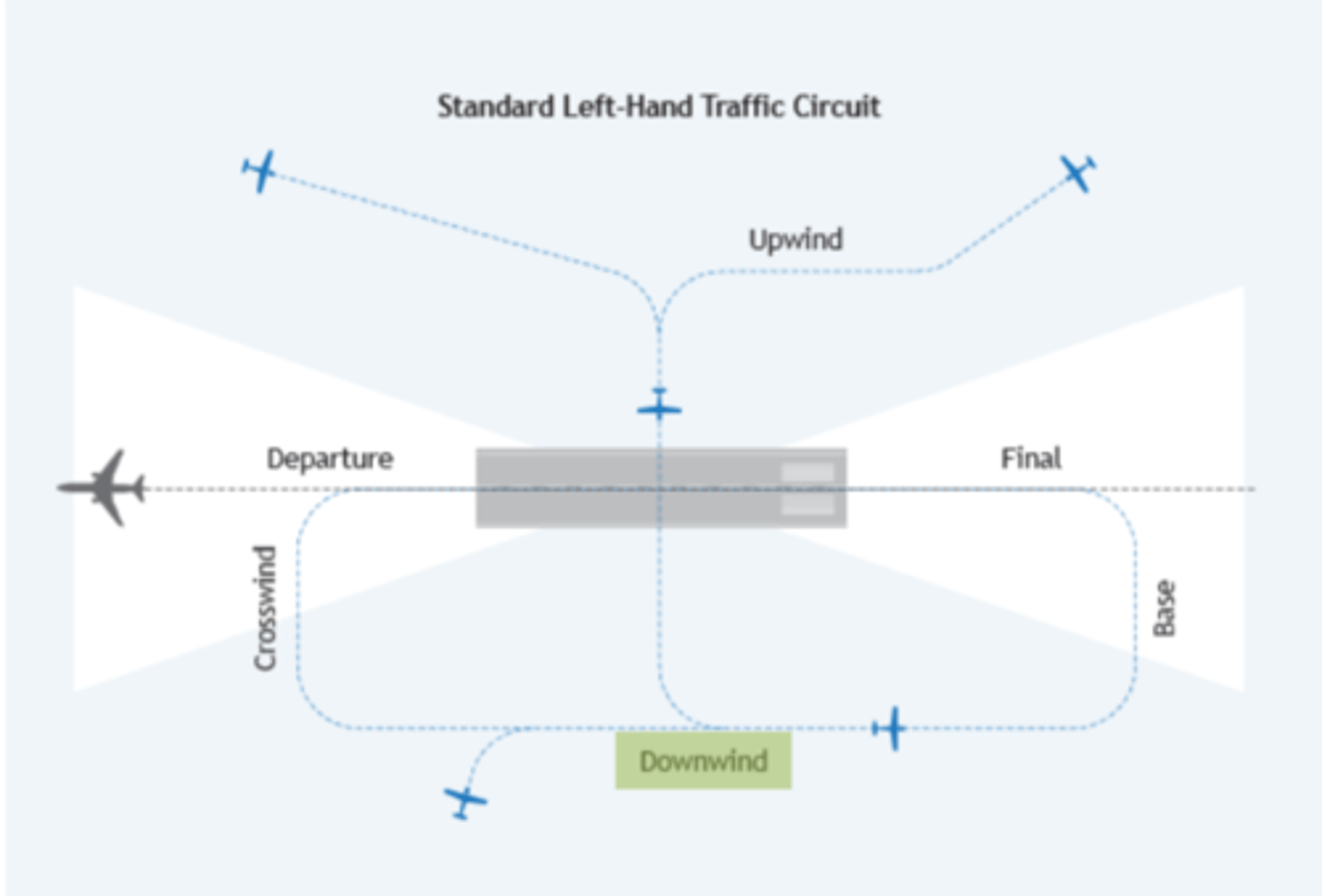
Base Leg
Flight path extending from the end of the downwind leg to the extended centreline of the approach end of the landing runway.
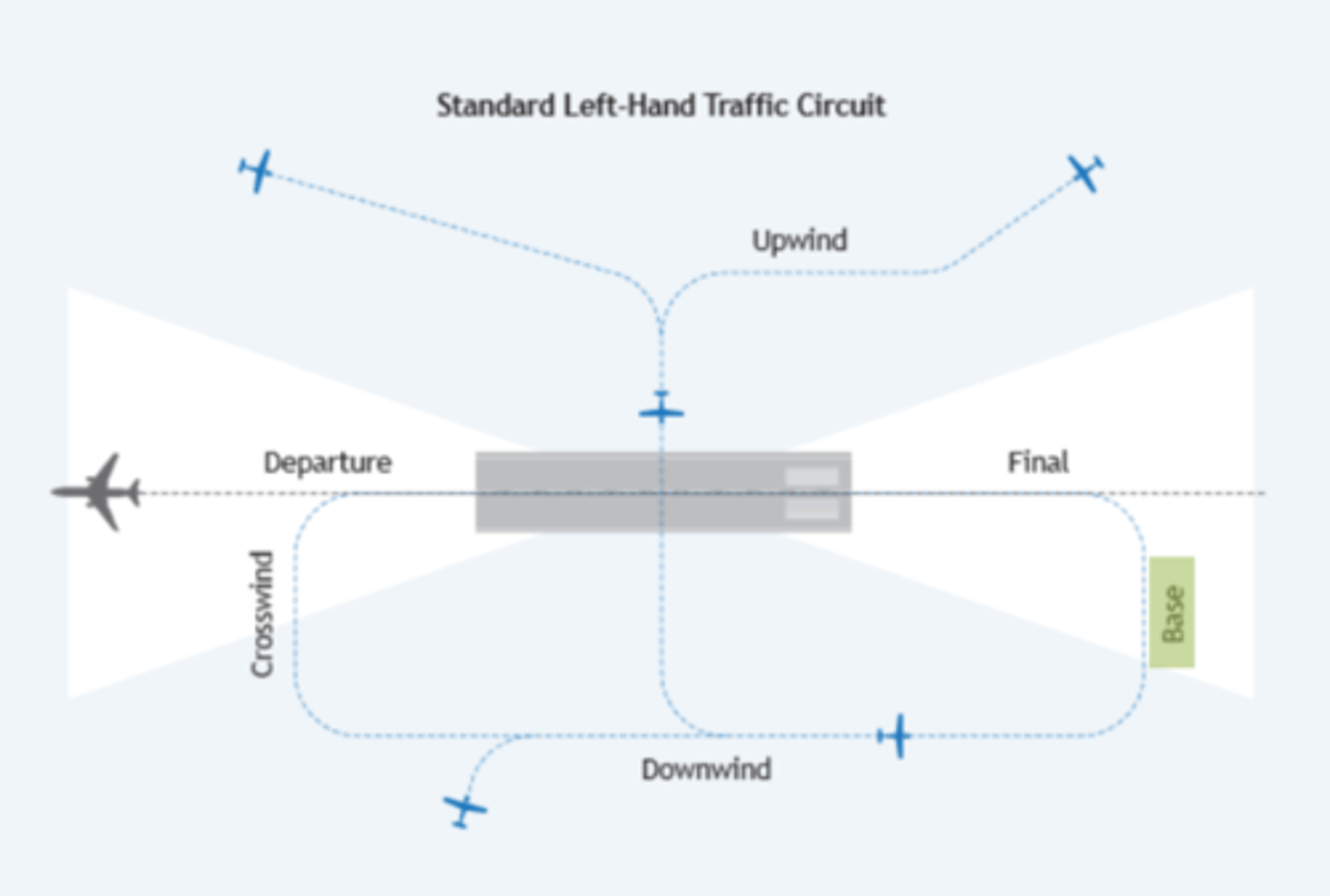
Final Approach Leg
A flight path extending from the end of the base leg in the direction of landing to and along the extended centreline of the runway to the threshold of the landing runway.
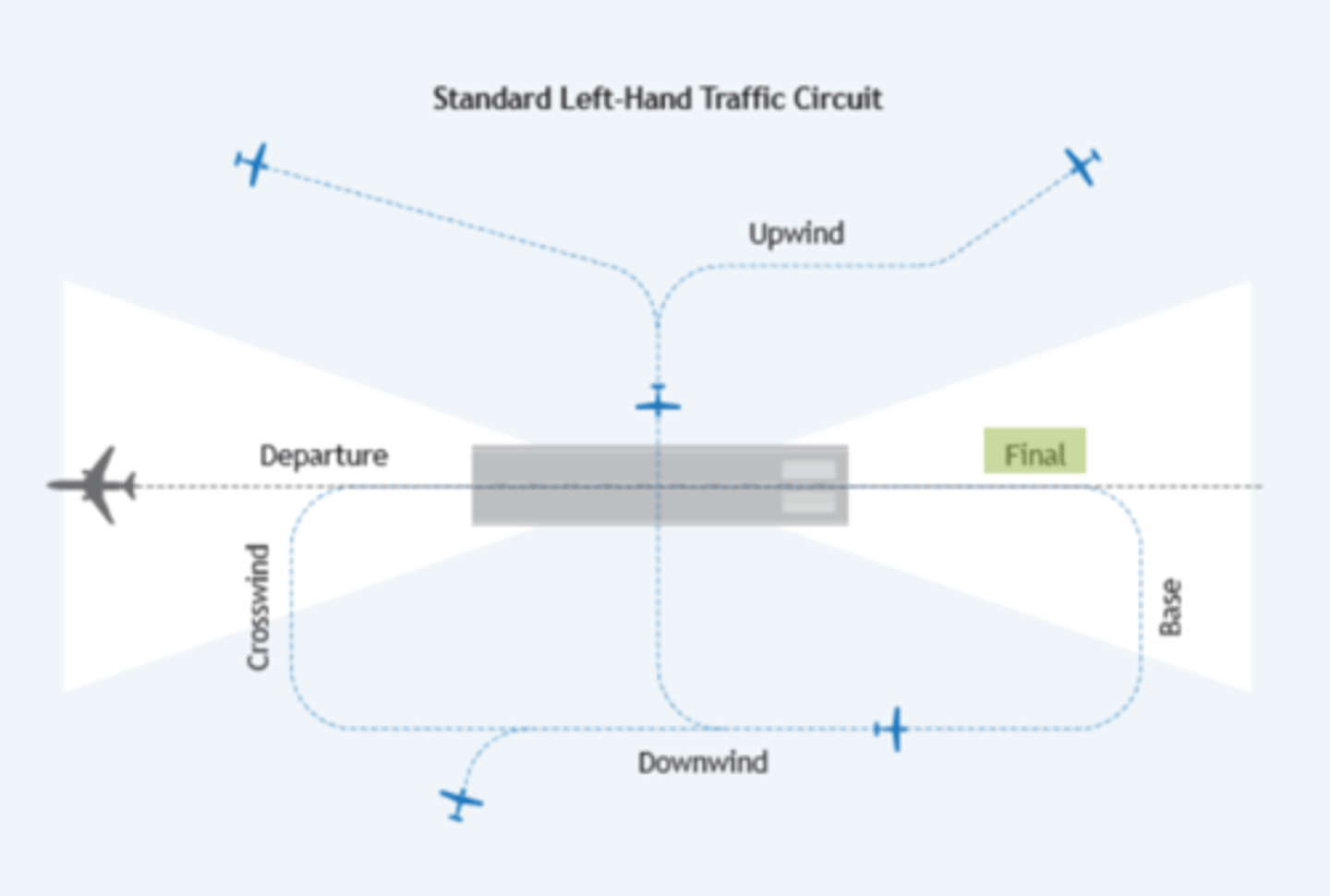
Crosswind Leg
This is most commonly the path joining the departure leg to the downwind leg, but can also be the path joining the upwind side to the downwind leg.
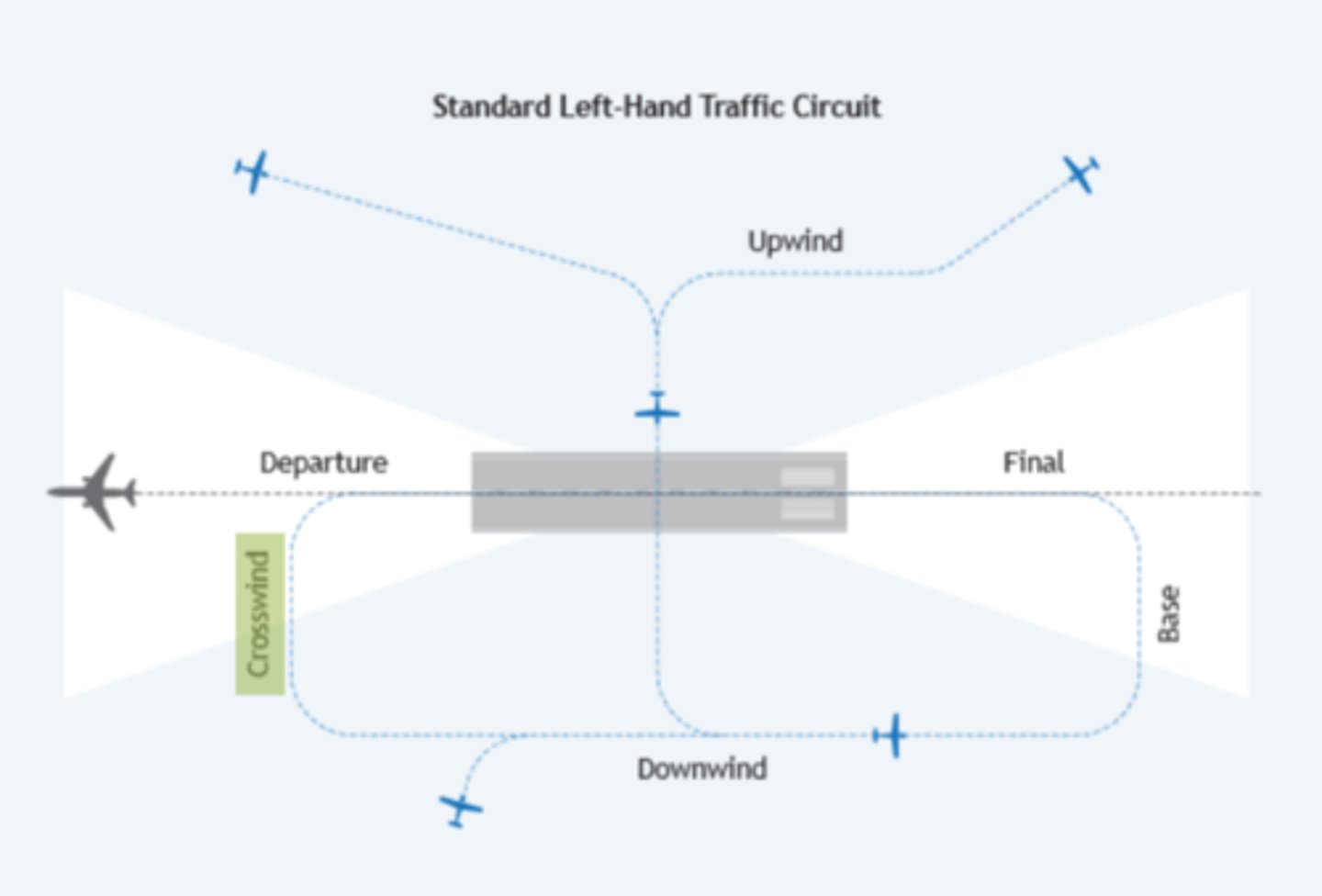
Departure and Overshoot Path
The path that extends from the departure end of the runway along the centreline to the point where the aircraft reaches 500 feet AGL and begins the crosswind leg.
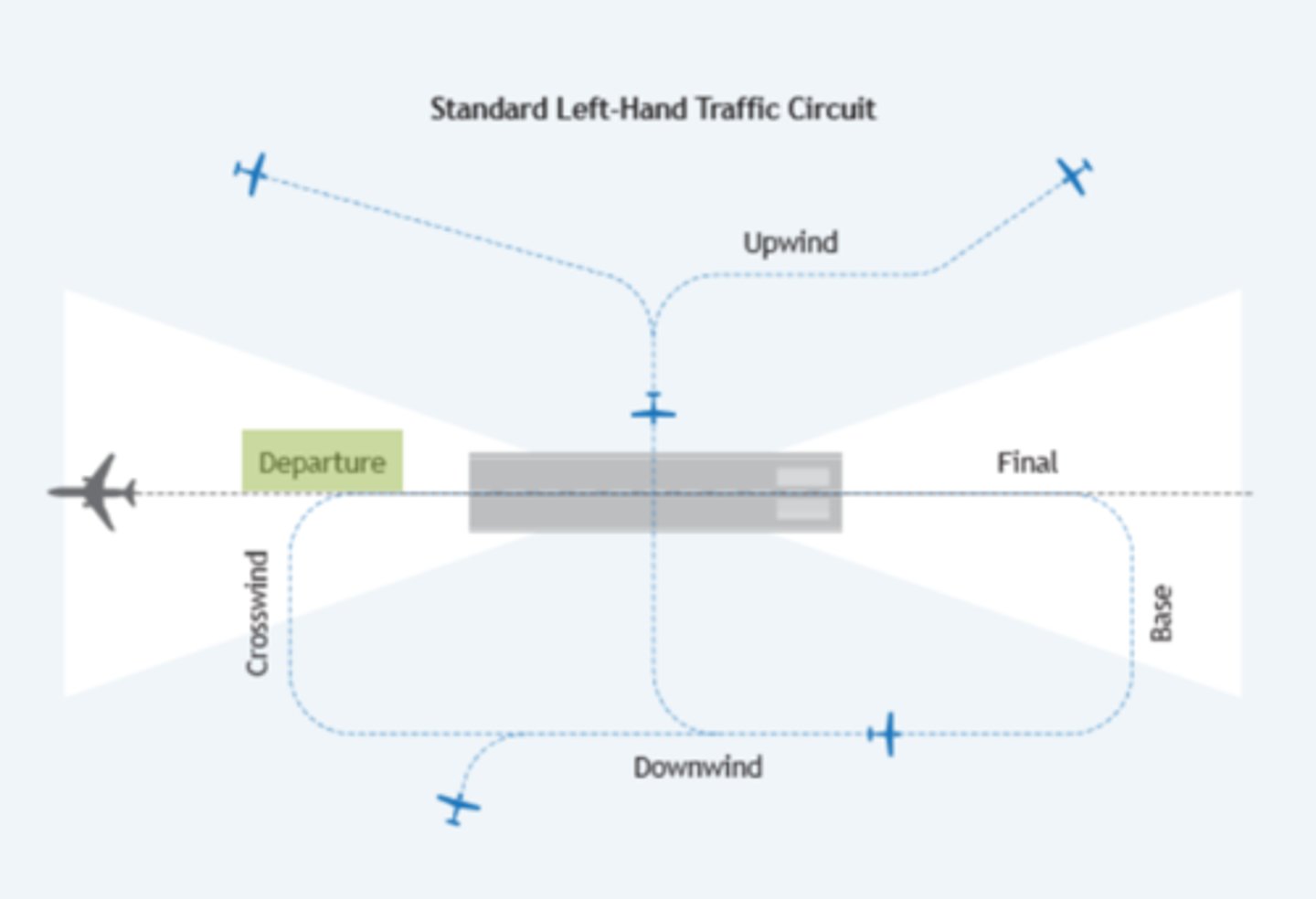
Upwind Side
Area on the opposite side of the landing runway from the downwind leg.
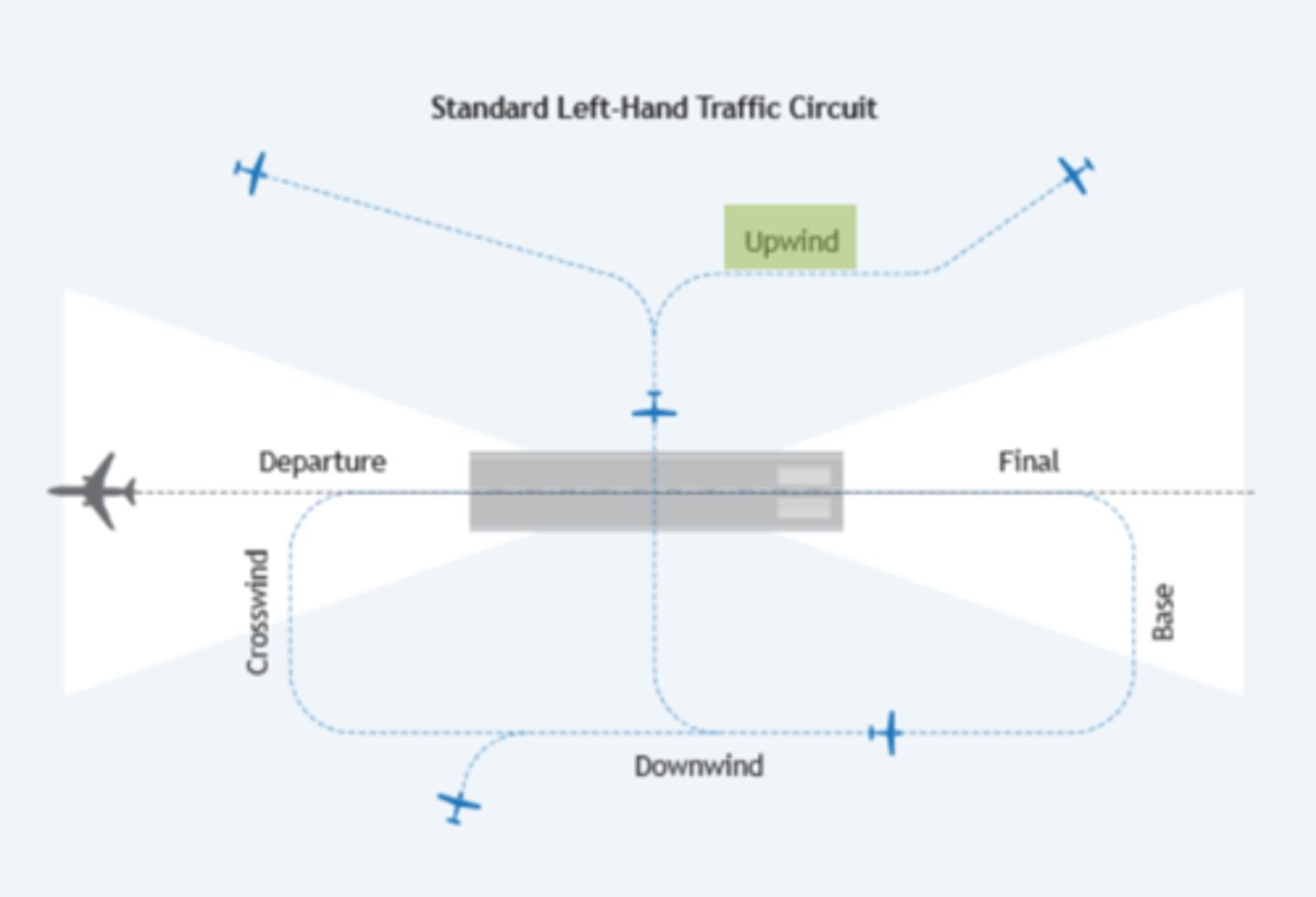
Clearance Limit
The point to which an aircraft is granted an ATC clearance.
Noise Abatement
Procedures used to reduce the level of noise generated by aircraft near airports.
Noise Abatement Procedures and Requirements
CAR 602.105
- Preferential runways
- Minimum noise routes
- Hours when aircraft operations are prohibited or restricted
- Arrival procedures
- Departure procedures
- Duration of Flights
- The prohibition or restriction of training flights
- VFR or visual approaches
- Simulated approach procedures
- The minimum altitude for the operation of aircraft in the vicinity of the aerodrome
Precision Approach
An instrument approach by an aircraft using azimuth (localizer/lateral nav) and glide path information.
Non-Precision Approach
An instrument approach by an aircraft using azimuth information only.
Obstruction Lights
Installed at the top of buildings, towers, and equipment to warn pilots of their presence.
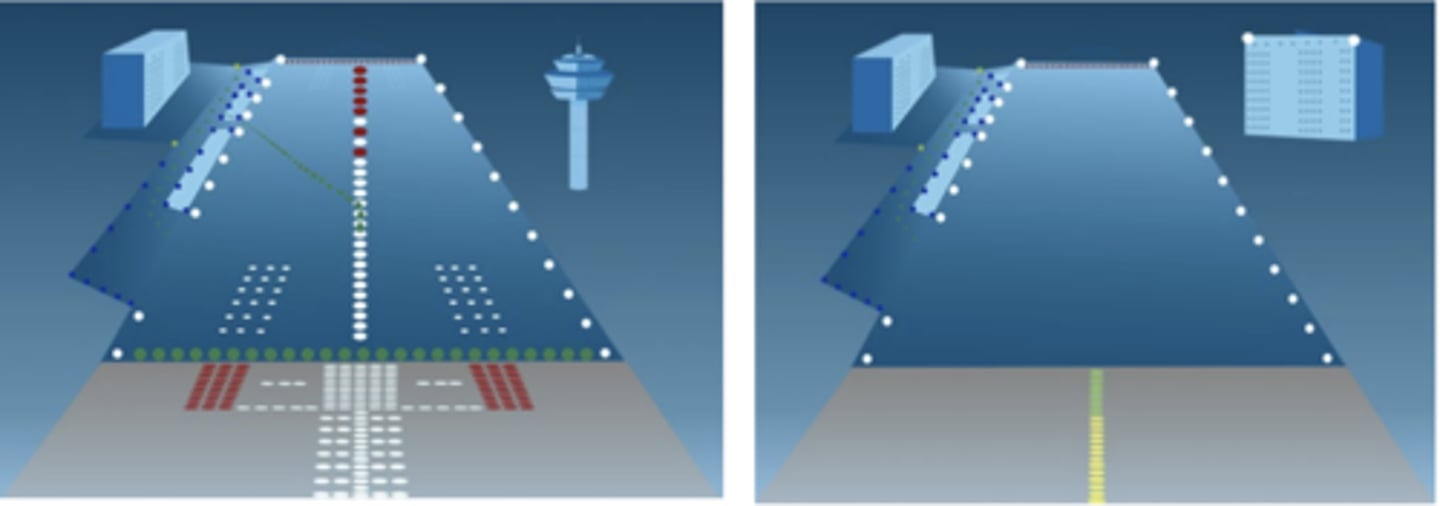
Approach Lighting
Help pilots align aircraft with the runway. There are various types of approach light systems.
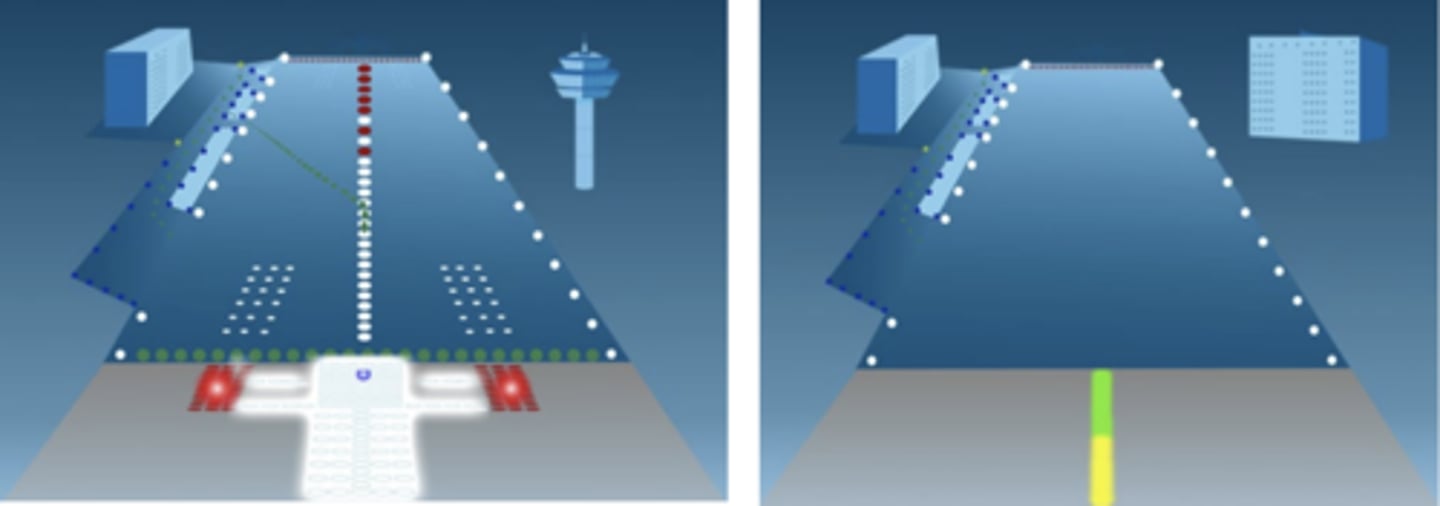
Runway Touchdown Zone Lighting
Identify the touchdown zone for landing. The lights are unidirectional, showing only in the direction of approach to landing.
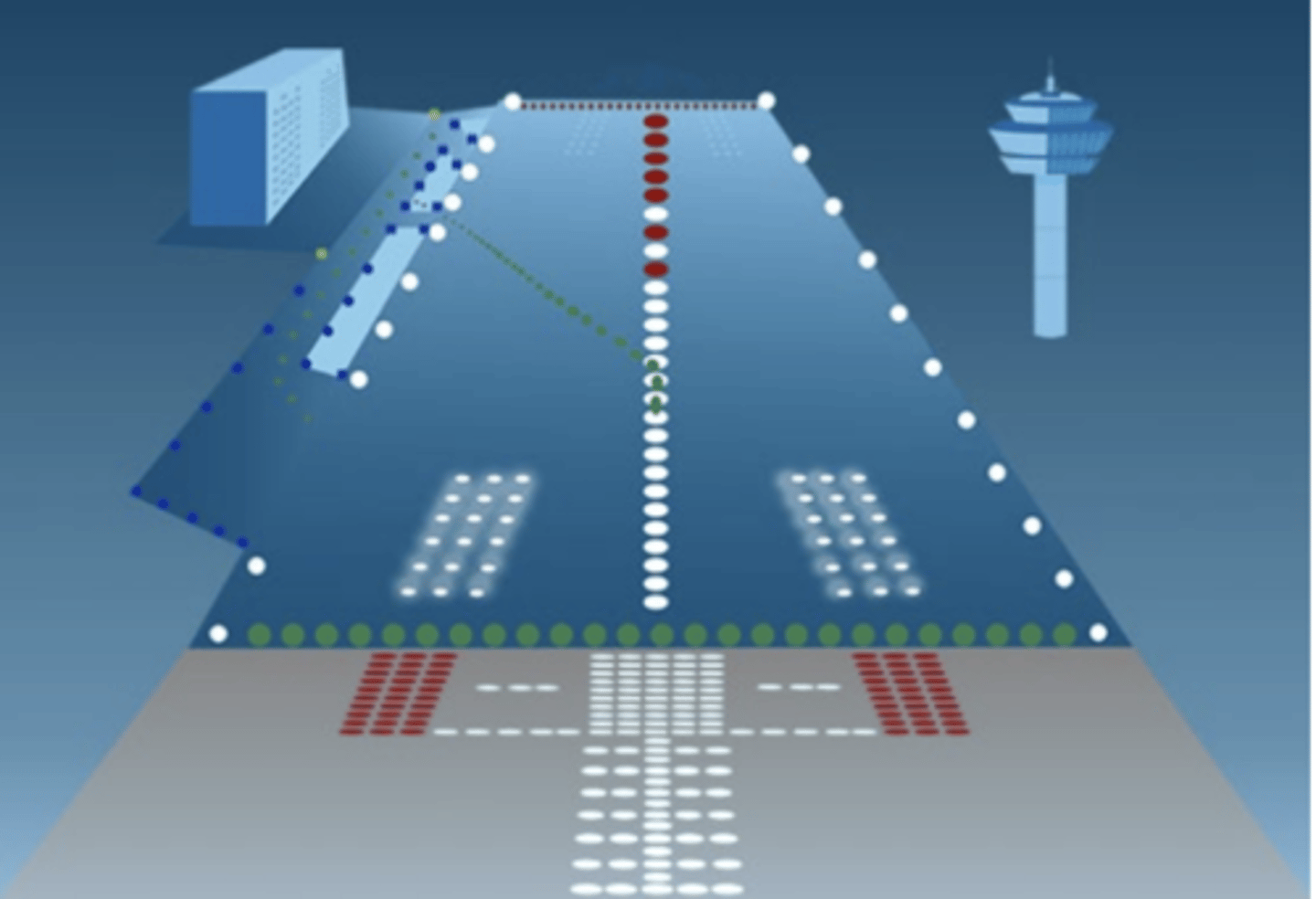
Runway Threshold and End Lights
Lights are present when there is an omni-directional approach lighting system or when no approach lighting is provided.
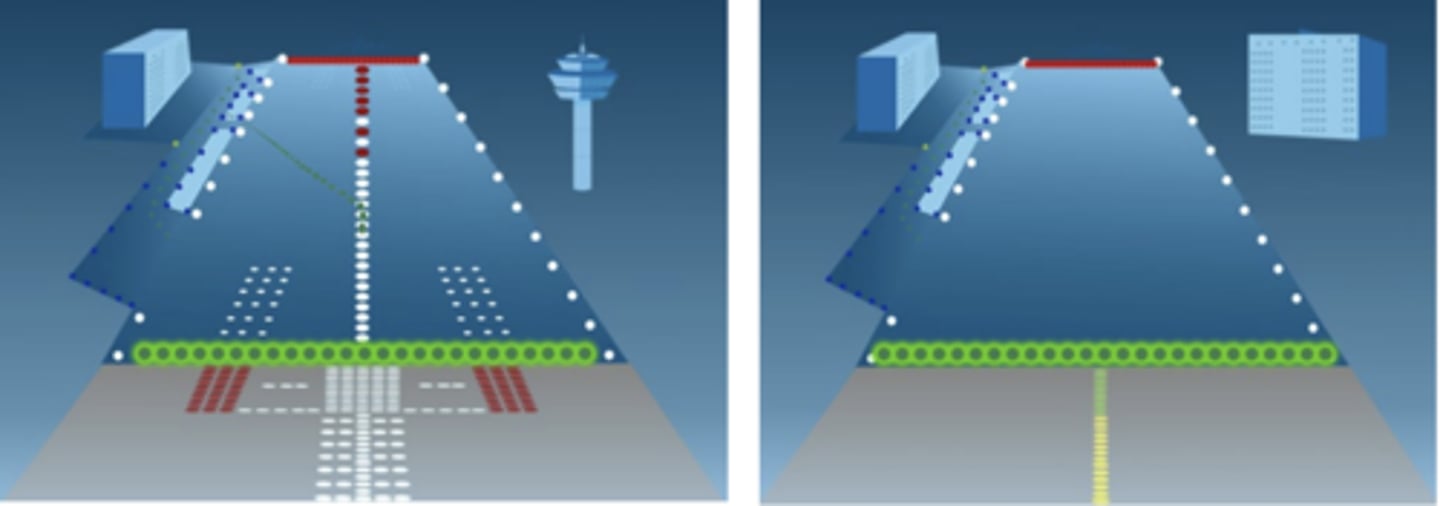
Runway Edge Lights
Lights appear at the runway edges along the full length of the runway, except at intersections with other runways or taxiways.
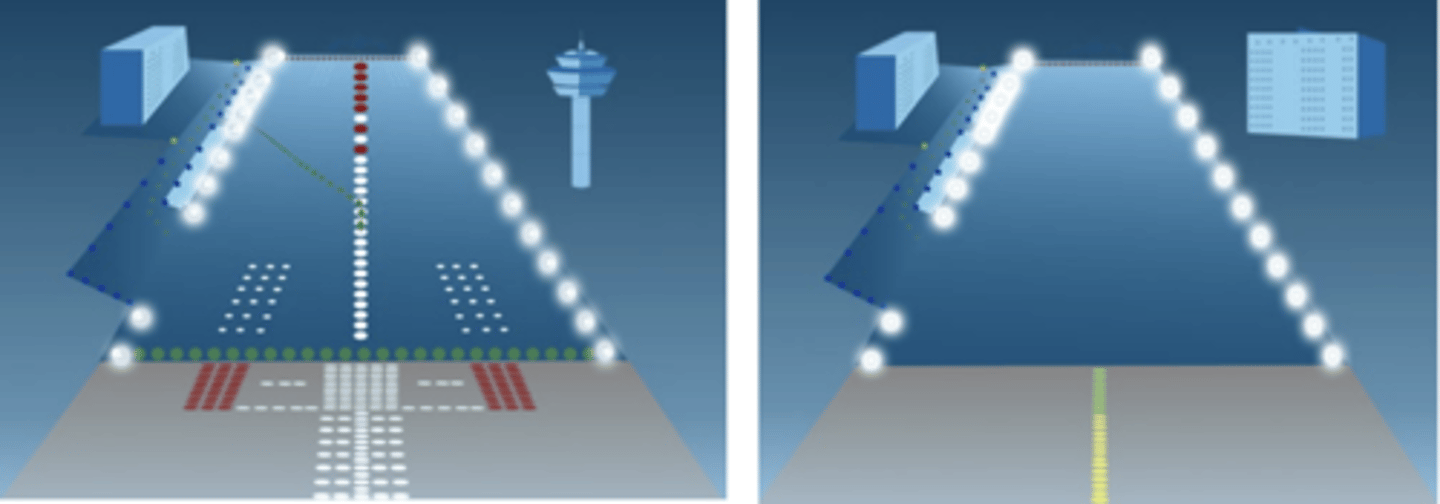
Runway Centreline Lighting
Lights facilitate landing when visibility is obscured.
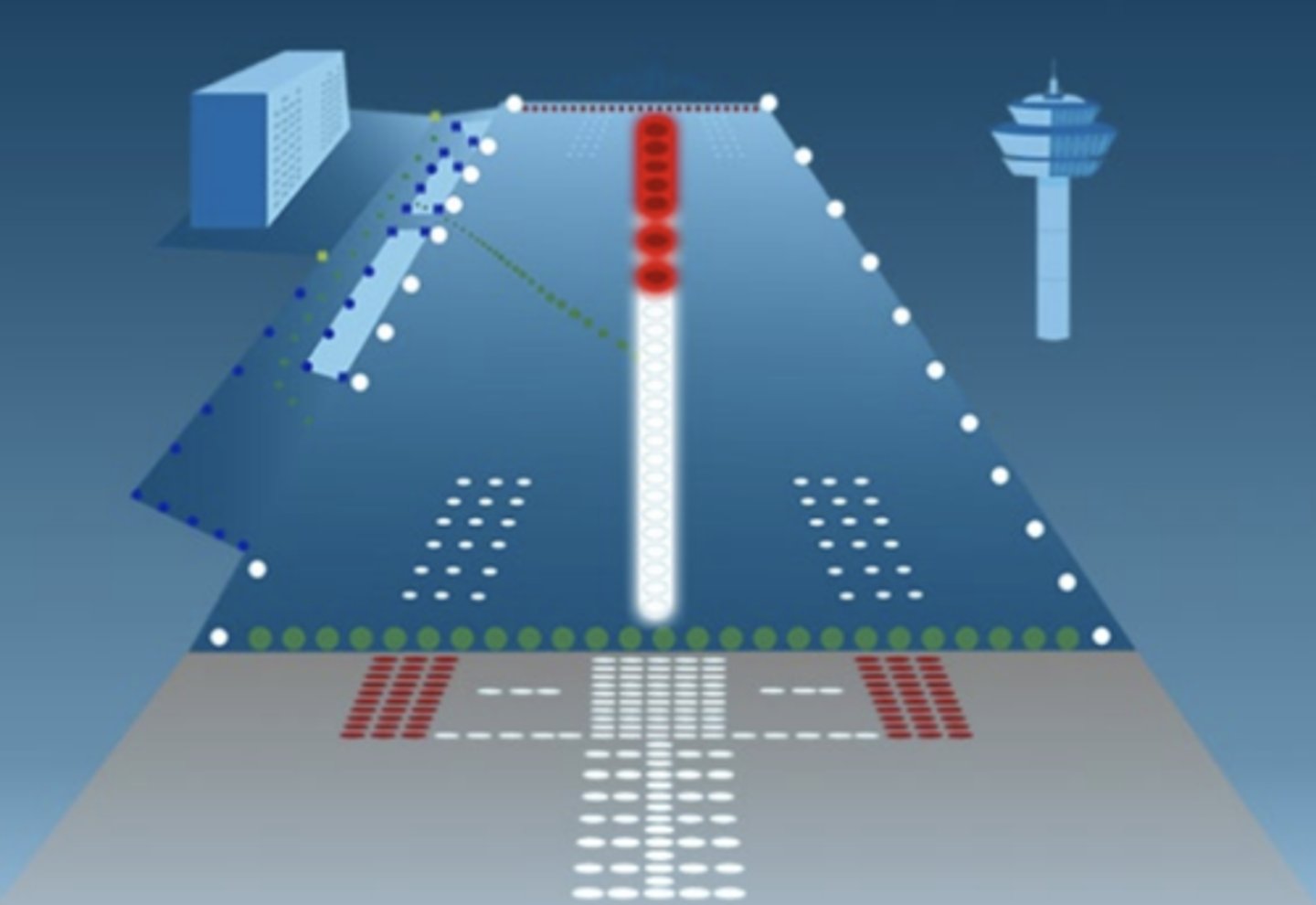
Runway Threshold Identification Lights (RTILs)
Required when the terrain does not allow for the installation of approach lights, or where other lighting conditions reduce the effects of approach lights. They are often used in marginal or reduced visibility conditions.

Taxiway Lighting
There are three types of lighting on a taxiway:
- Taxiway edge lights in blue,
- Intersection of taxiway and apron lights in yellow, and
- Centreline taxiway lights in green.
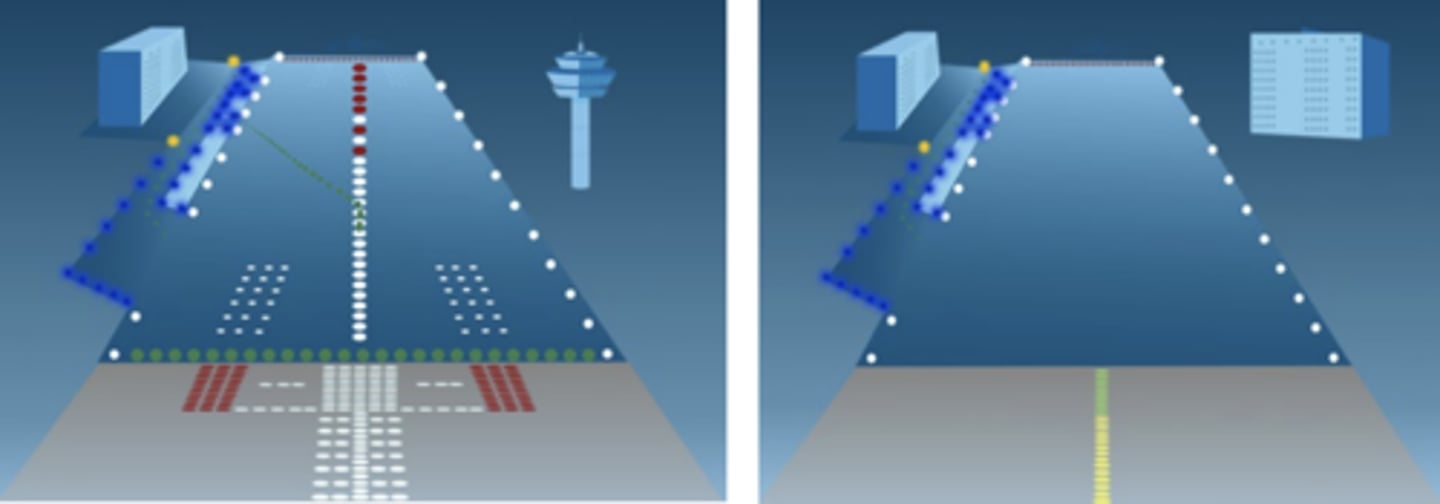
Rapid-Exit Taxiway Lighting
To reduce the aircraft runway occupancy time, some airports provide rapid-exit taxiways. These are lit in alternating green and yellow lights.
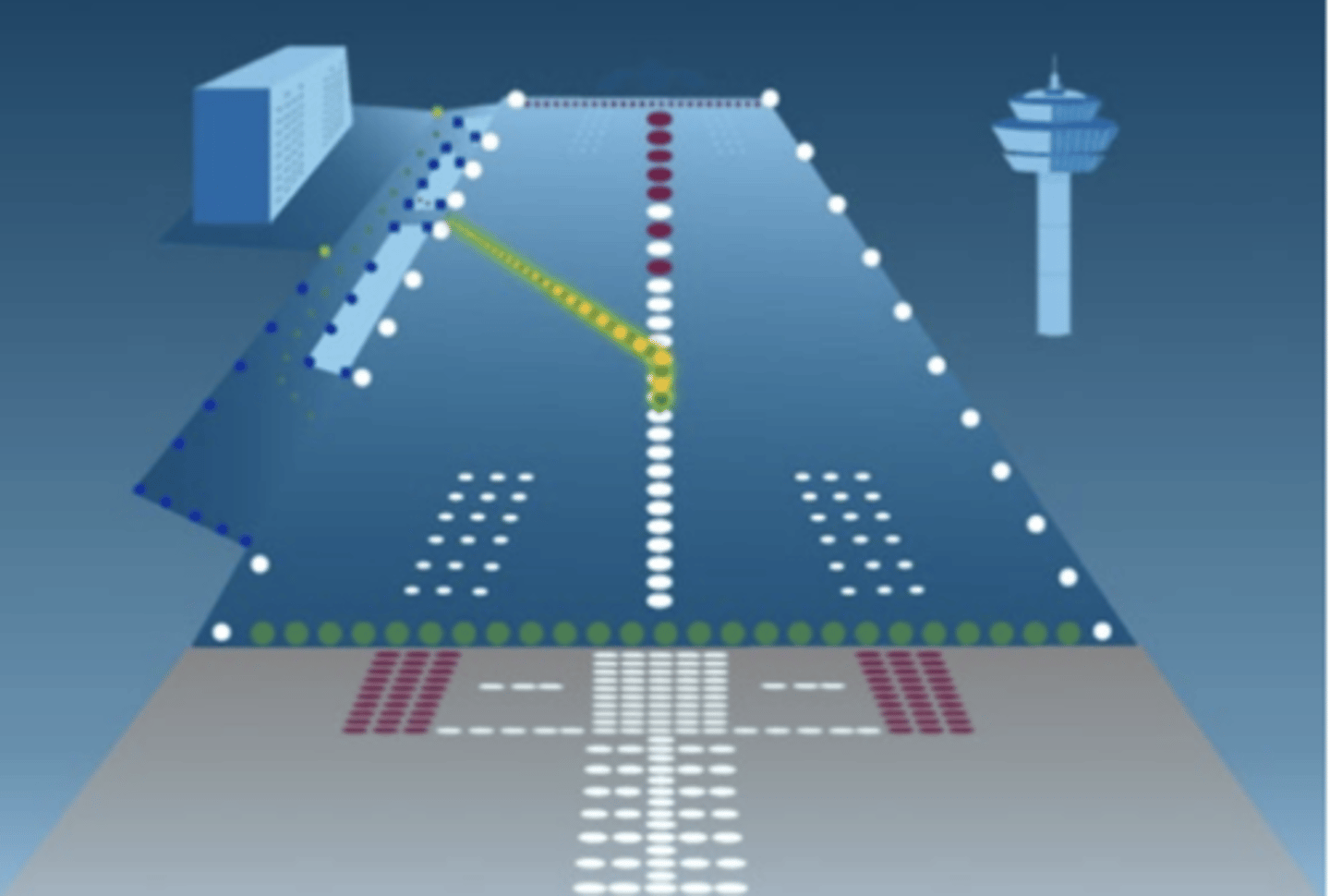
ATS Services
- Information Services
- Advisory Services
- Control Services
- Alerting Services
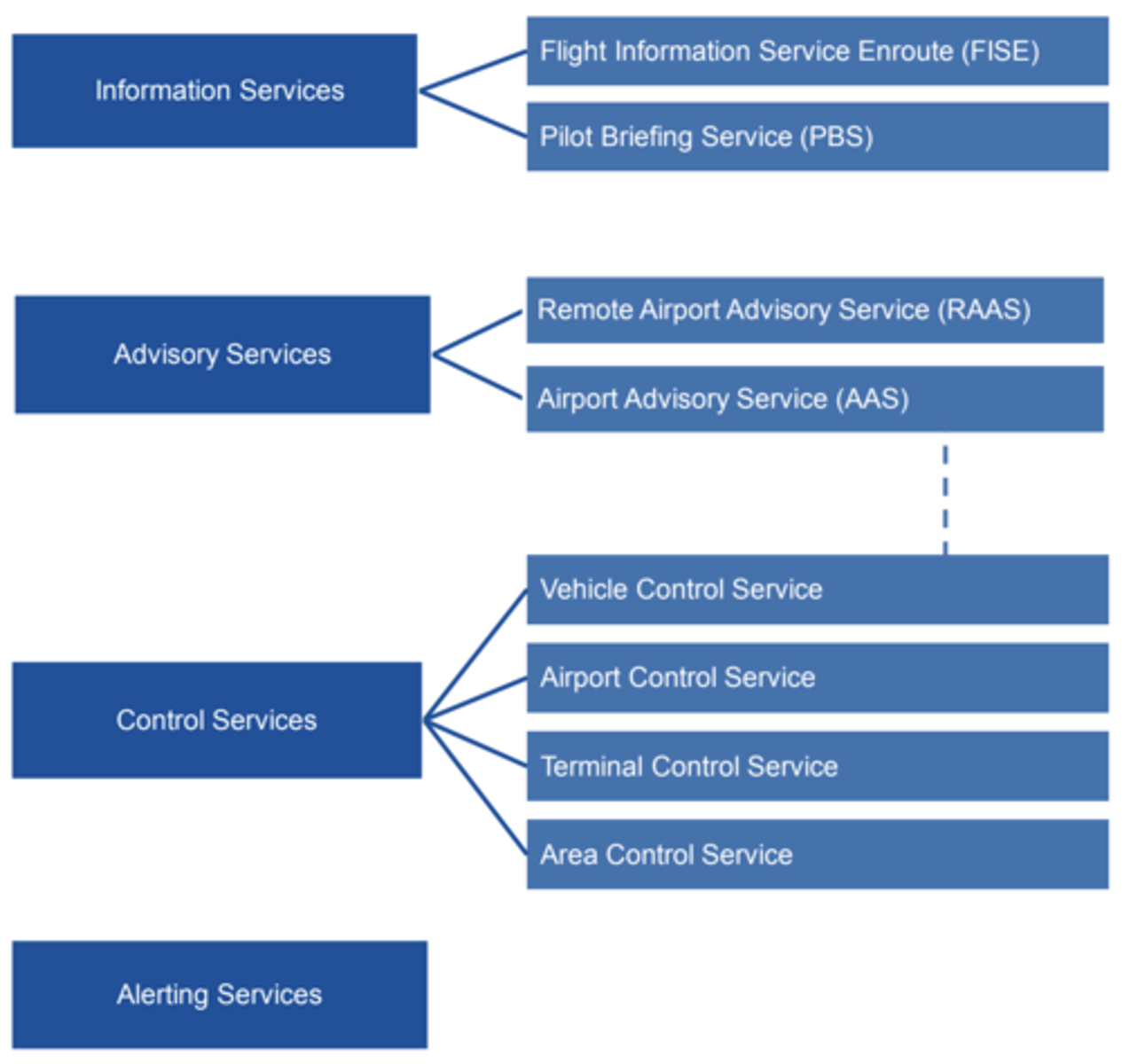
Information services
- Flight information service enroute (FISE)
- Pilot briefing service (PBS)
Advisory services
- Airport advisory services (AAS)
- Remote airport advisory services (RAAS)
Control services
- Vehicle control services
- Airport control services
- Tower control services
- Area control services
All ATS units provide:
Information services and alerting services.
Flight Information Service Enroute (FISE)
Provided by Flight Service Specialists working in FICs. Includes information about conditions along the route of flight that are likely to make operations unfeasible or hazardous.
Pilot Briefing Service (PBS)
Provided by FSS working in FICs. Ensures pilots receive all pertinent aeronautical and meteorological information prior to flight.
Advisory Services
Provision of information essential for the safe and efficient movement of arriving and departing aircraft.
Airport Advisory Service (AAS)
Provided by FSS. Includes information on local weather and traffic, runway conditions, wind and altimeter as well as emergency assistance.
Remote Airport Advisory Service (RAAS)
ASS provided by FSS remotely.
The objective of control services:
To maintain a safe, orderly, and expeditious flow of traffic that is under the control of their unit.
Control services ensure separation between:
Aircraft in the air, vehicles on the ground, or both.
Vehicle Control Service
Provided by Ground Controllers at airports equipped with control towers and by FSS at airport advisory sites. Meant for ground traffic and aircraft on the maneuvering area.
Airport Control Service
Provided by Airport Controllers. Meant for aircraft and vehicles on the manoeuvring area of an airport and to aircraft operating in the vicinity of an airport.
Terminal Control Service
Provided by Terminal Controllers. Meant to provide separation between IFR aircraft, as well as IFR and VFR aircraft as the aircraft arrive or depart from airports in their area of responsibility.
Area Control Service
Provided by Enroute Controllers at ACCs. They ensure separation between IFR and some types of VFR aircraft operating in their area of responsibility as they progress between airports.
Alerting Service
Provided by all ATS units to notify the appropriate safety services organizations about aircraft in need of search and rescue and rescue aid, and to assist such organizations as required.
ATS Surveillance Control Service
Controls aircraft by providing vectors to establish required separation between aircraft, and between aircraft and obstacles, based on information derived from surveillance equipment sources.
ATS Positions
- Flight Service Specialist
- Apron Advisory
- Ground Control
- Tower Control
- Clearance Delivery
- Terminal Arrival
- Terminal Departure
- Terminal Surveillance
- Enroute

Flight Service Specialist call sign
RADIO
Apron Advisory Service call sign
APRON
Clearance Delivery call sign
CLEARANCE DELIVERY
Ground Control call sign
GROUND
Tower Control call sign
TOWER
Terminal Control call signs
Terminal Departure - DEPARTURE
Terminal Arrival - ARRIVAL
If one controller is working both Departure and Arrival - TERMINAL
Terminal Surveillance - TERMINAL
The main role of terminal and enroute controllers is to separate:
- IFR aircraft from IFR aircraft
- IFR aircraft from VFR aircraft
- VFR aircraft from VFR aircraft, workload permitting
Terminal Control Area of Responsibility
- Vertical airspace from the surface out to ~FL230.
- Horizontal airspace within a radius of 26 miles, usually centred on the busiest airport.

Flight Information Regions
- Vancouver
- Edmonton
- Winnipeg
- Toronto
- Montreal
- Moncton
- Gander
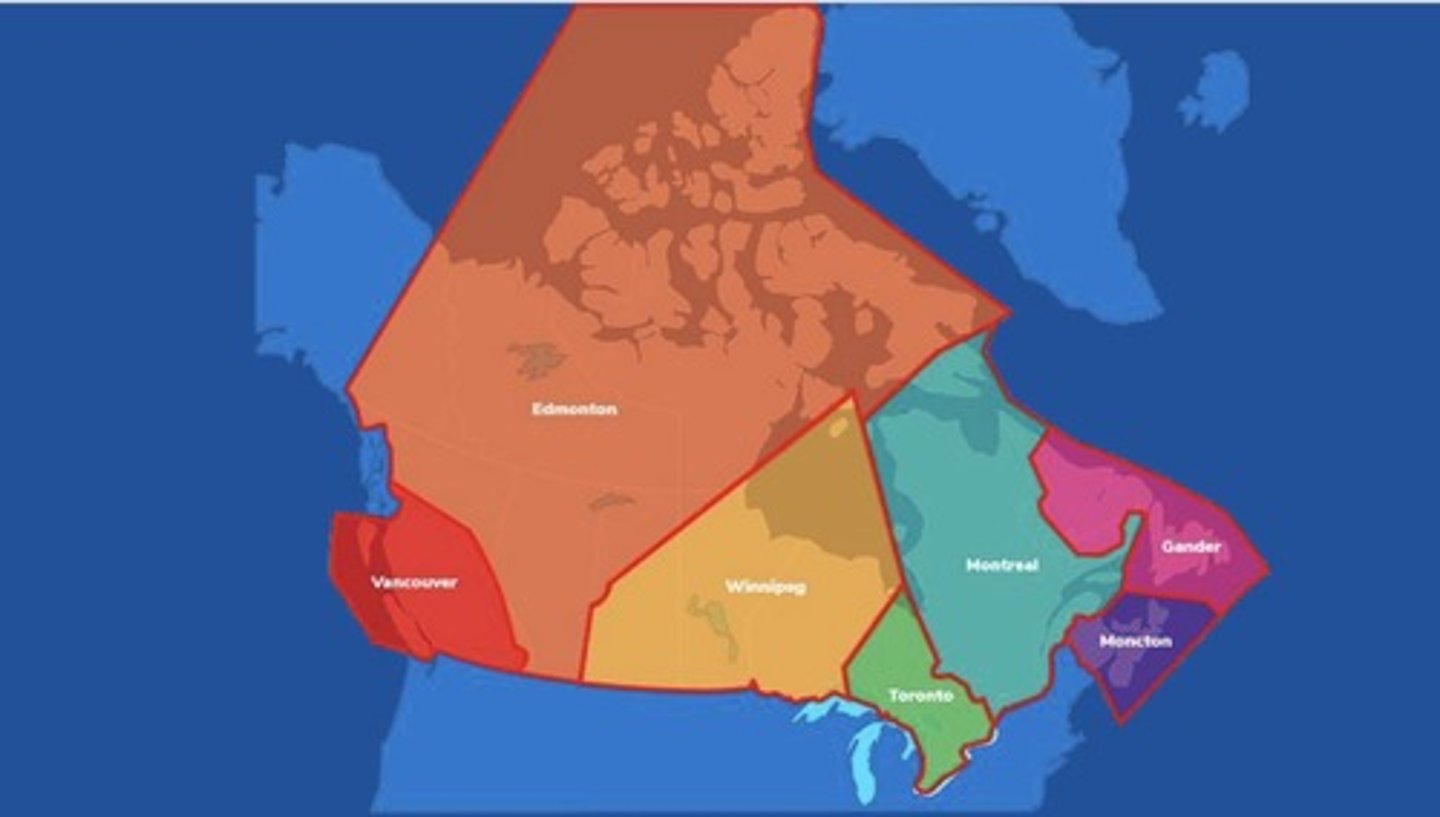
FIR HQ and subdivisions?
ACC, Specialties, and Sectors
Ground Visibility
The visibility at an aerodrome, as reported by an accredited observer or by automatic systems.
Flight Visibility
The visibility forward from the cockpit of an aircraft in flight.
VFR Minima
As per CAR 602.114, when in Visual Meteorological Conditions (VMC):
- The aircraft must be operated with visual reference to the surface.
- Flight visibility must be at least 3 miles.
- The aircraft's distance from any cloud must be at least 500 feet vertically and 1 mile horizontally.
- When the aircraft is operated in a control zone:
-- Ground visibility must be at least 3 miles.
-- The aircraft must be at least 500 feet above the ground, except during takeoff or landing.
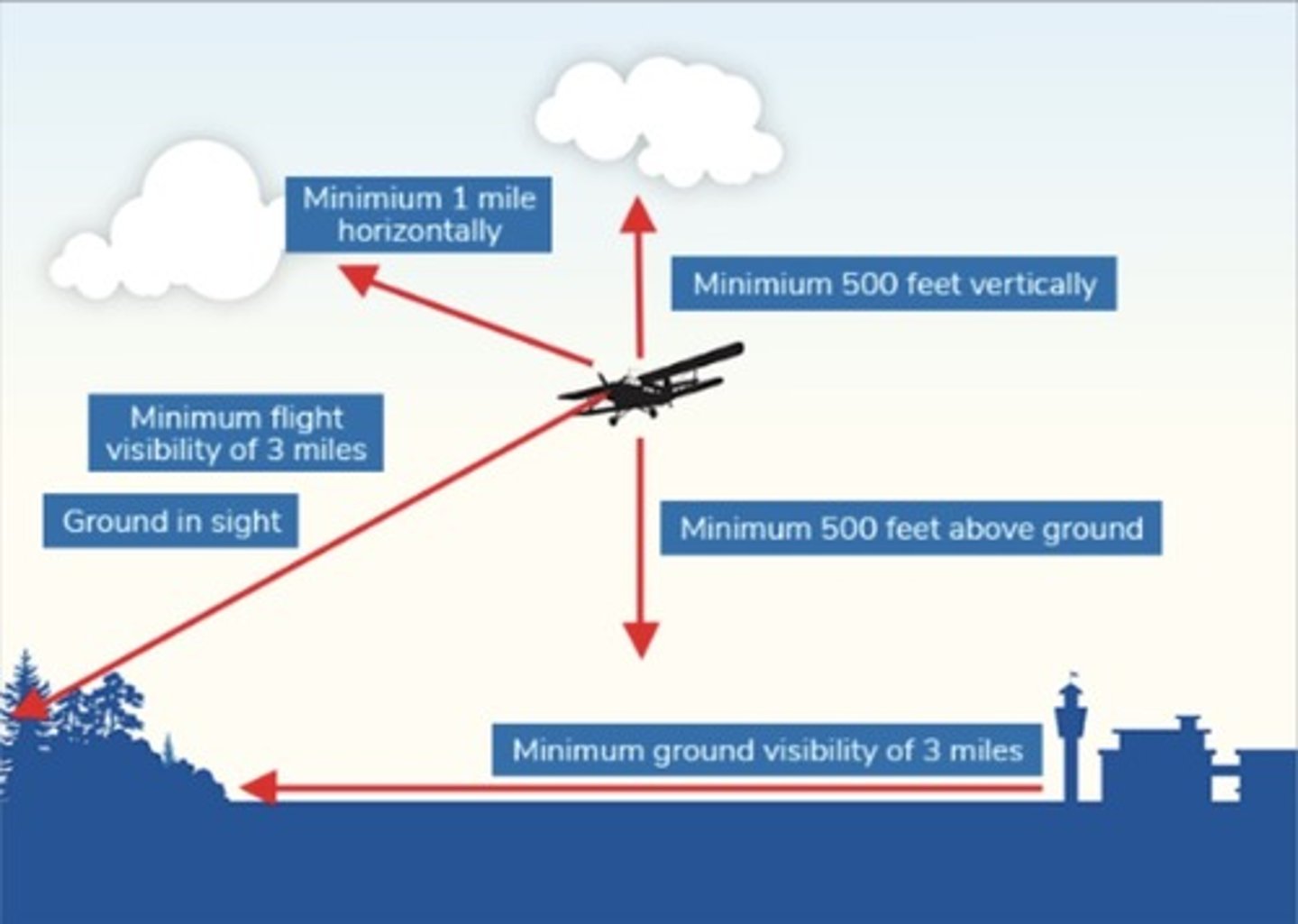
SVFR Minima
As per CAR 602.117, when within a control zone and in conditions below VFR but above IMC:
- Flight visibility is 1 mile or greater for aircraft (½ mile for helicopters).
- The aircraft is operated clear of clouds and with visual reference to the surface at all times.
- When reported, ground visibility is not less than 1 mile for aircraft (½ mile for helicopters).
NOTE: For aircraft other than helicopters, nighttime SVFR operations are limited to landings only.
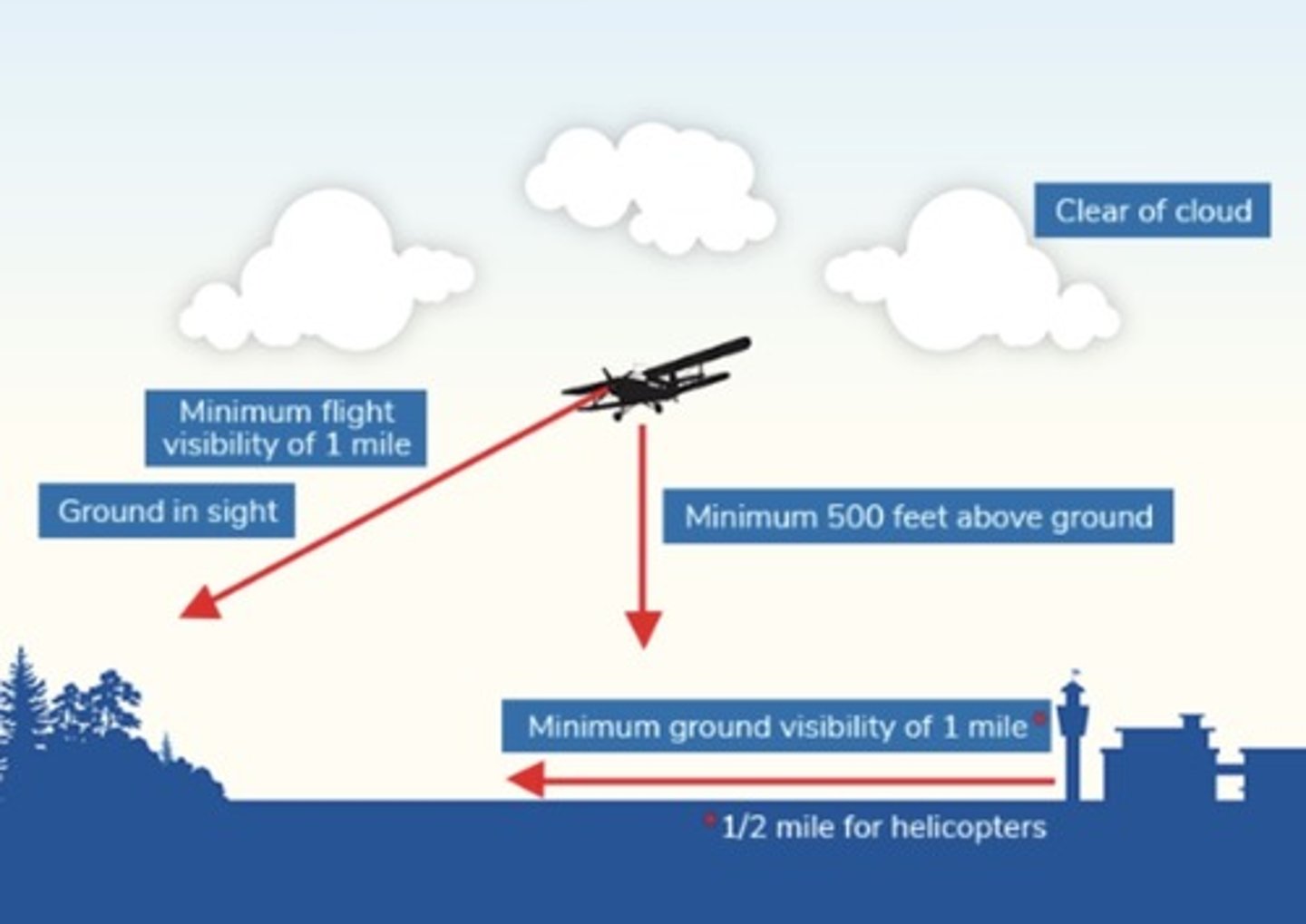
VFR OTT Minima
As per CAR 602.116, when flying in the cruise portion of flight and during the day, and when clouds prevent visual reference to the ground:
- It is operated at a vertical distance of at least 1000 feet from any cloud.
- The vertical distance between cloud layers is at least 5000 feet when the aircraft is between two cloud layers.
- Flight visibility at cruising altitude is at least 5 miles.
- An aerodrome forecast (TAF) for the period from 1 hour before to 2 hours after the ETA indicates:
-- No broken, overcast, or obscured layer lower than 3000 feet above the planned flight altitude; and
-- Scattered cloud or clear sky; and
-- Ground visibility of at least 5 miles with no precipitation, fog, thunderstorms, or blowing snow.
NOTE: If no TAF, use an area forecast (FA) for 1 hour before to 3 hours after.
CAR 602.21
No person shall operate an aircraft in such proximity to another aircraft as to create a risk of collision.
Right-of-Way: Two aircraft at the same altitude.
The pilot-in-command of the aircraft that has an aircraft on its right must give way.
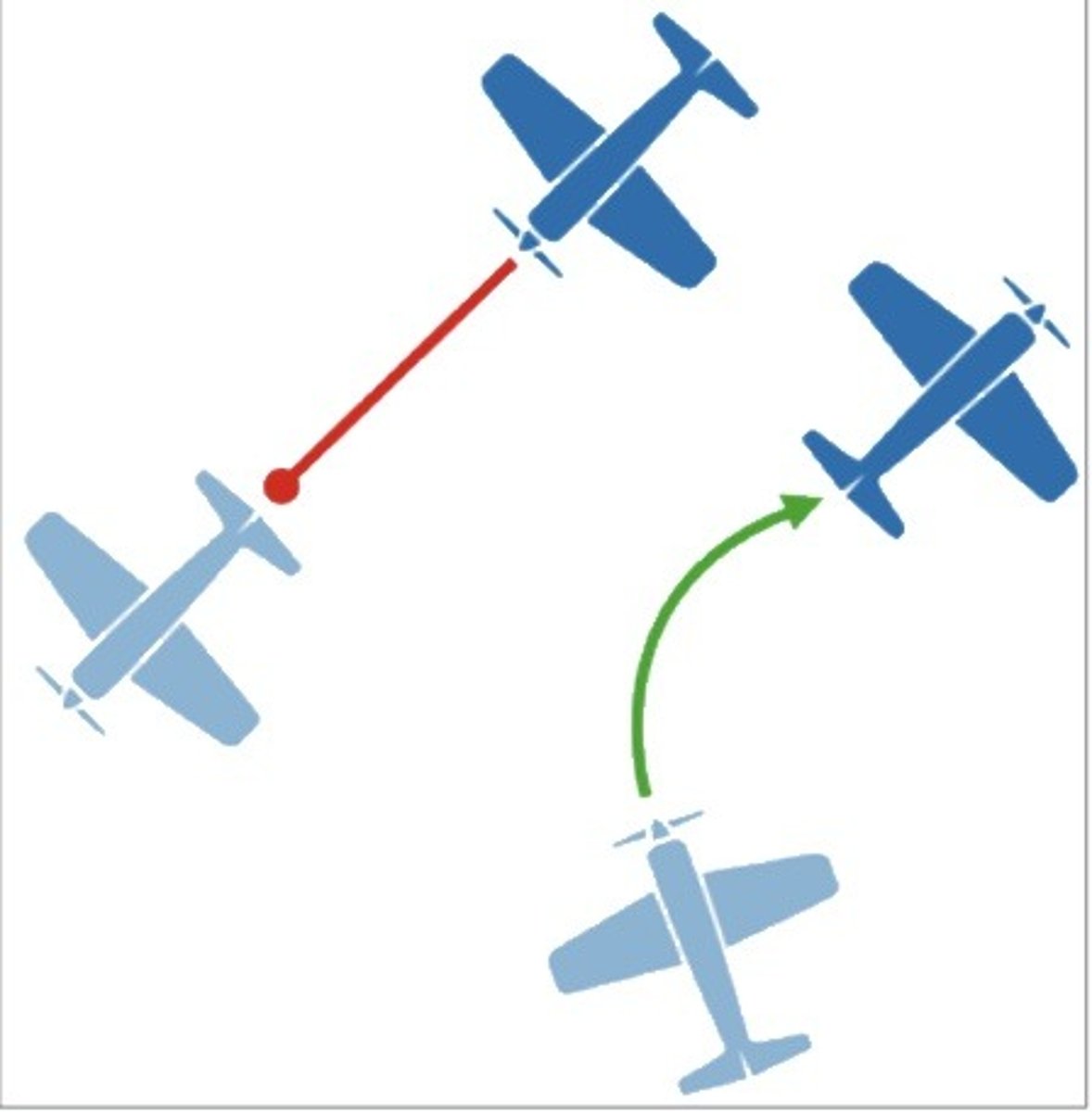
Right-of-Way: Two aircraft approaching head-on.
The pilot-in-command of each aircraft must alter headings to the right.
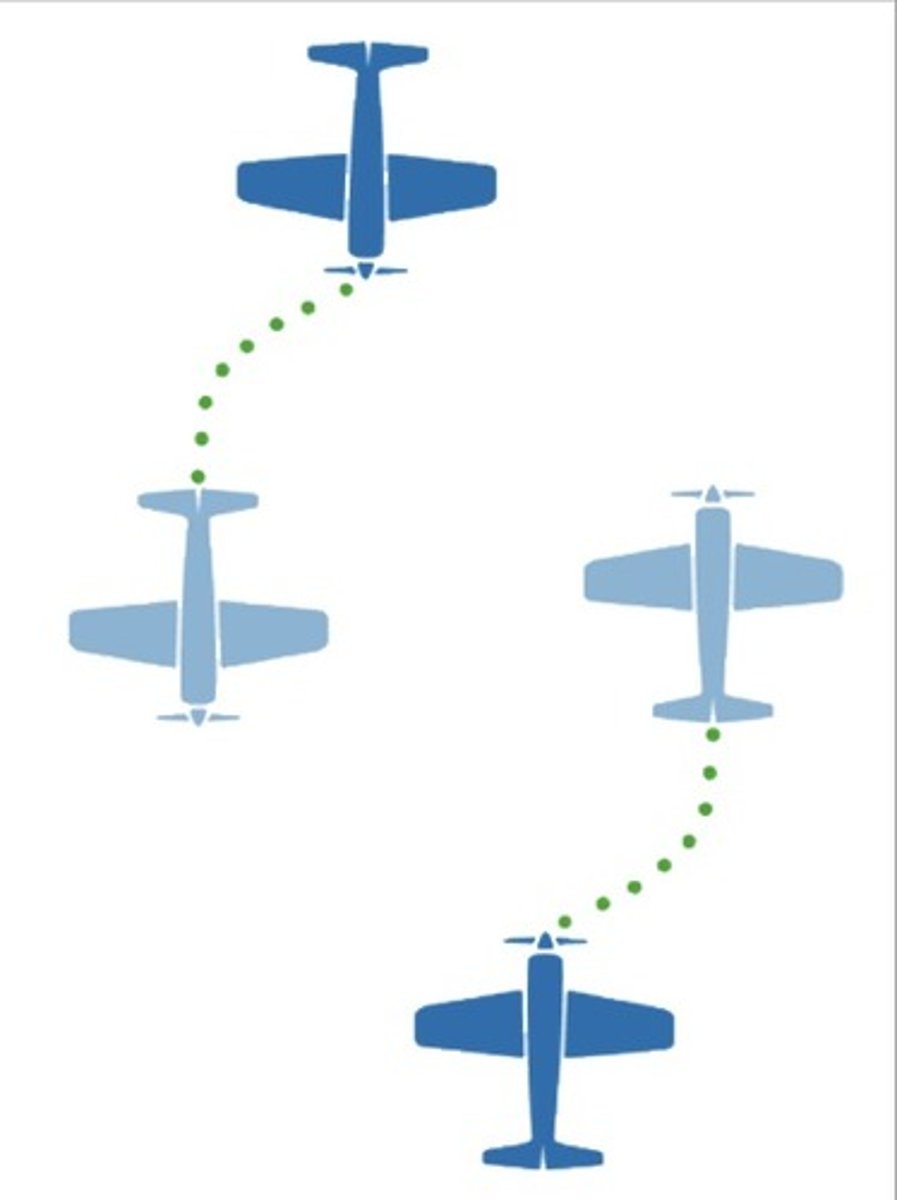
Right-of-Way: Two hot air balloons.
The pilot-in-command of the balloon at the higher altitude must give way.
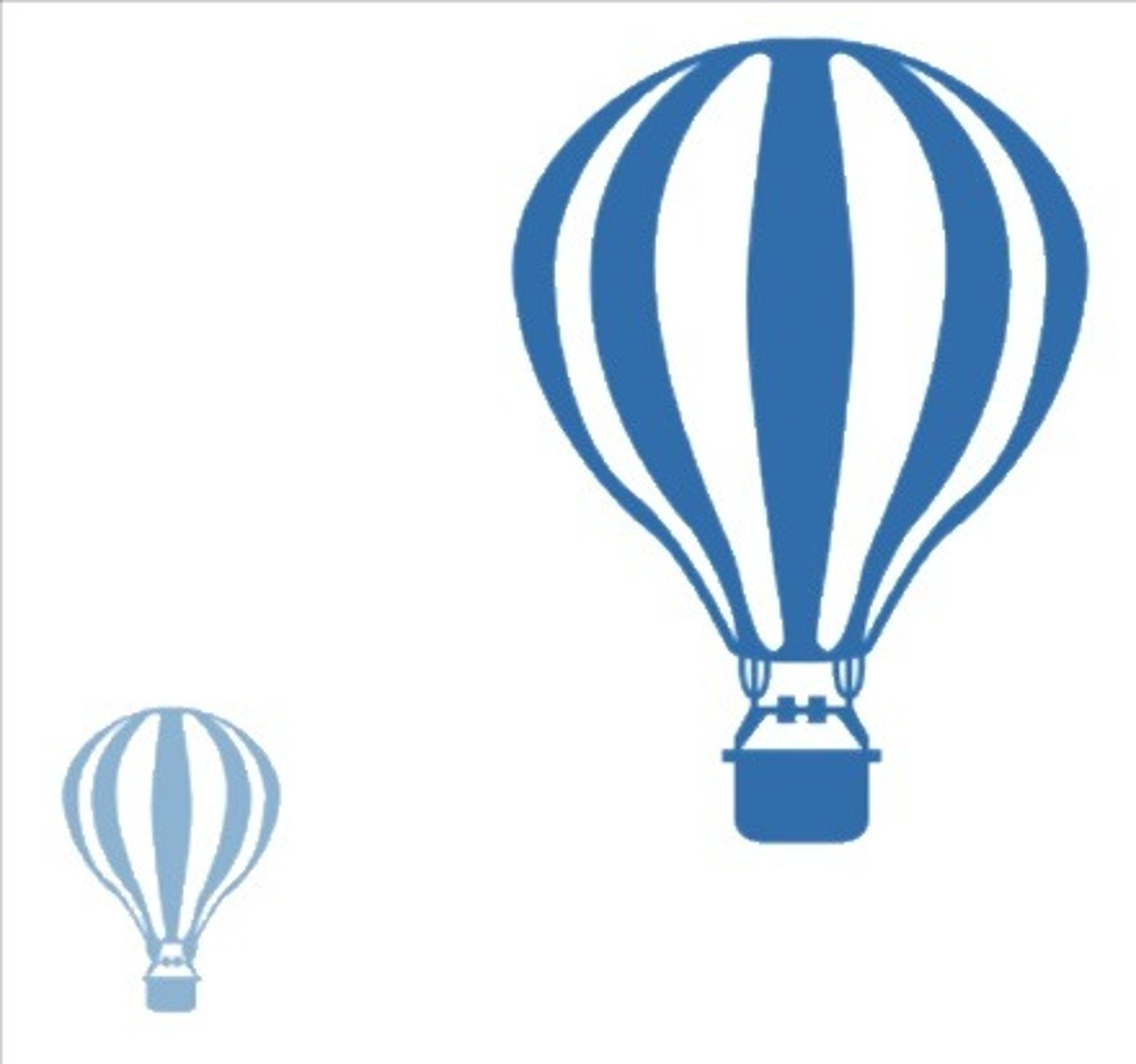
Right-of-Way: An aircraft being overtaken by another aircraft.
An aircraft that is being overtaken has the right-of-way. The overtaking aircraft, whether climbing, descending or in level flight, must alter the heading to the right.
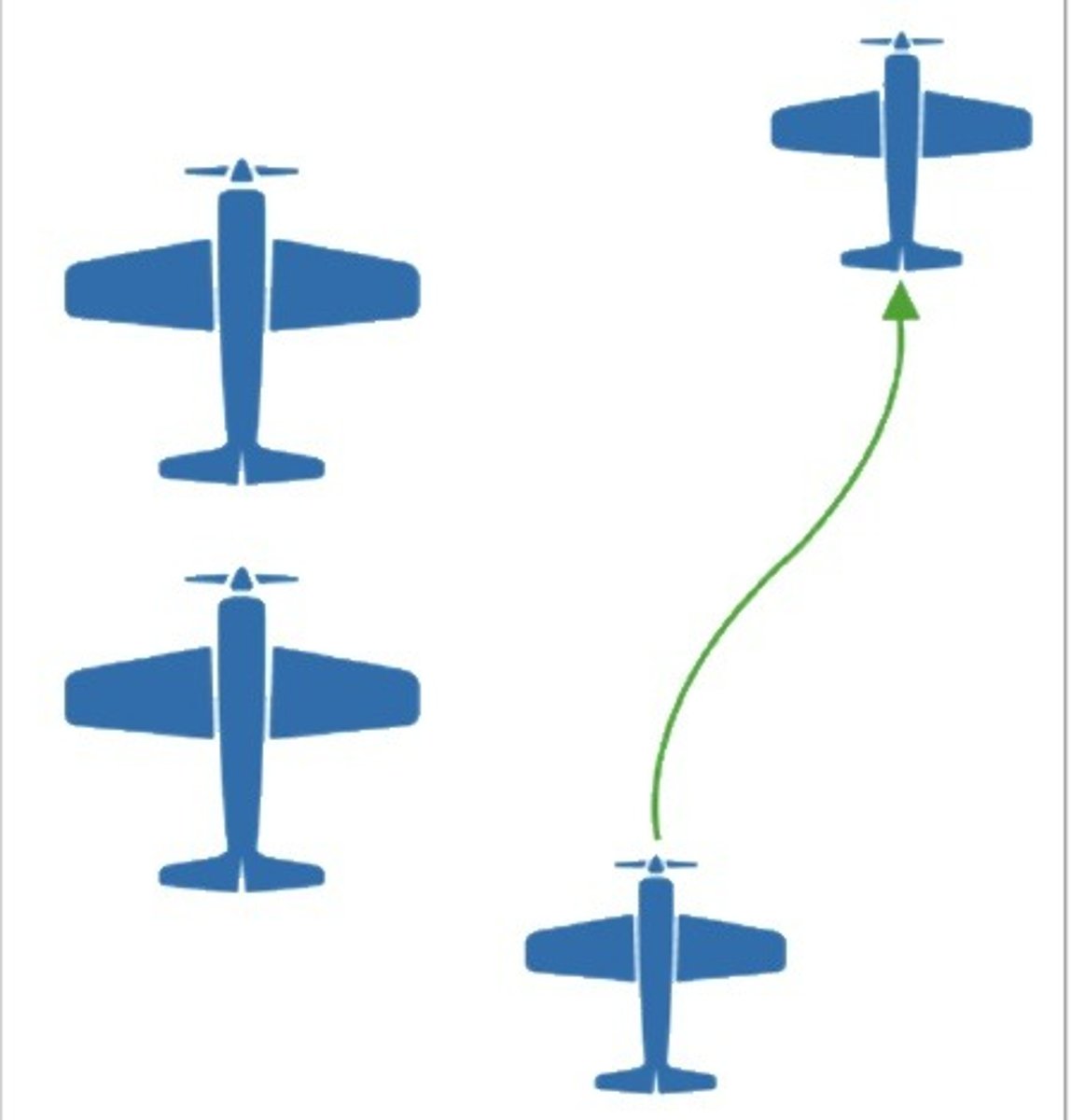
Right-of-Way: When an aircraft is in flight or manoeuvring on the surface, the pilot-in-command will give way to:
An aircraft that is landing or about to land.
Right-of-Way: The pilot-in-command of an aircraft that is approaching an aerodrome to land will give way to:
Any aircraft at a lower altitude that is also approaching the aerodrome to land.
Right-of-Way: The pilot-in-command of an aircraft at a lower altitude will not:
Overtake or cut in front of an aircraft at a higher altitude that is in the final stages of an approach to land.
Right-of-Way: When aircraft are operating on the water as float planes, they must follow the following right-of-way rules:
- If an aircraft has another vessel or aircraft on its right, the pilot-in-command must give way.
- When an aircraft is approaching another aircraft or vessel head-on, or close to head-on, the pilot-in-command will alter its heading to the right.
- The pilot-in-command of an aircraft that is overtaking another aircraft or a vessel on the water will alter its heading to keep well clear of the other aircraft or the vessel.
CAR regulations for minimum altitudes of flight, including near or over built-up areas and open-air assemblies of people
- Airplanes: Airplanes must be 1000 feet above the highest obstacle within a horizontal distance of 2000 feet.
- Balloons: Balloons must be 500 feet above the highest obstacle within a horizontal distance of 500 feet.
- Other Aircraft: Other aircraft must be 1000 feet above the highest obstacle within a horizontal distance of 500 feet.
Prerequisite purposes for minimum distance exceptions near or over built-up areas and open-air assemblies of people
- A police operation conducted in the service of the police authority.
- Saving human life.
- Firefighting or air ambulance operations.
- Administration of the Fisheries Act or the Coastal Fisheries Protection Act.
- Administration of national or provincial parks.
- Flight inspection.
To fly below the minimum distance requirements, the pilot must:
- Have an authorization from the Minister of Transport or an air operator certificate that authorizes them to do so.
- Comply with the Commercial Air Service Standards.
Conditions for a takeoff or landing within a built-up area of a city or town at a place that is not located at an airport, heliport or a military aerodrome
- The location is not set apart for the operation of aircraft.
- The flight is conducted without creating a hazard to persons or property on the surface.
- The flight is part of an authorized police operation or for the purpose of saving human life.
Distance of separation in areas that are not built up and do not contain assemblies of people.
500 feet.
In areas that are not built up and do not contain assemblies of people, with an authorization from the Minister of Transport, a pilot may fly below the minimum distance requirements for the purpose of:
- Aerial application or aerial inspection.
- Aerial photography conducted by the holder of an air operator certificate.
- Helicopter external load operations.
- Flight training conducted by or under the supervision of a qualified flight instructor.
Formation Flight
- CAR 602.24. Require pre-arrangement between:
-- The pilots-in-command of the aircraft.
-- The pilots-in-command and the appropriate air traffic control unit, when the flight is conducted within a control zone.
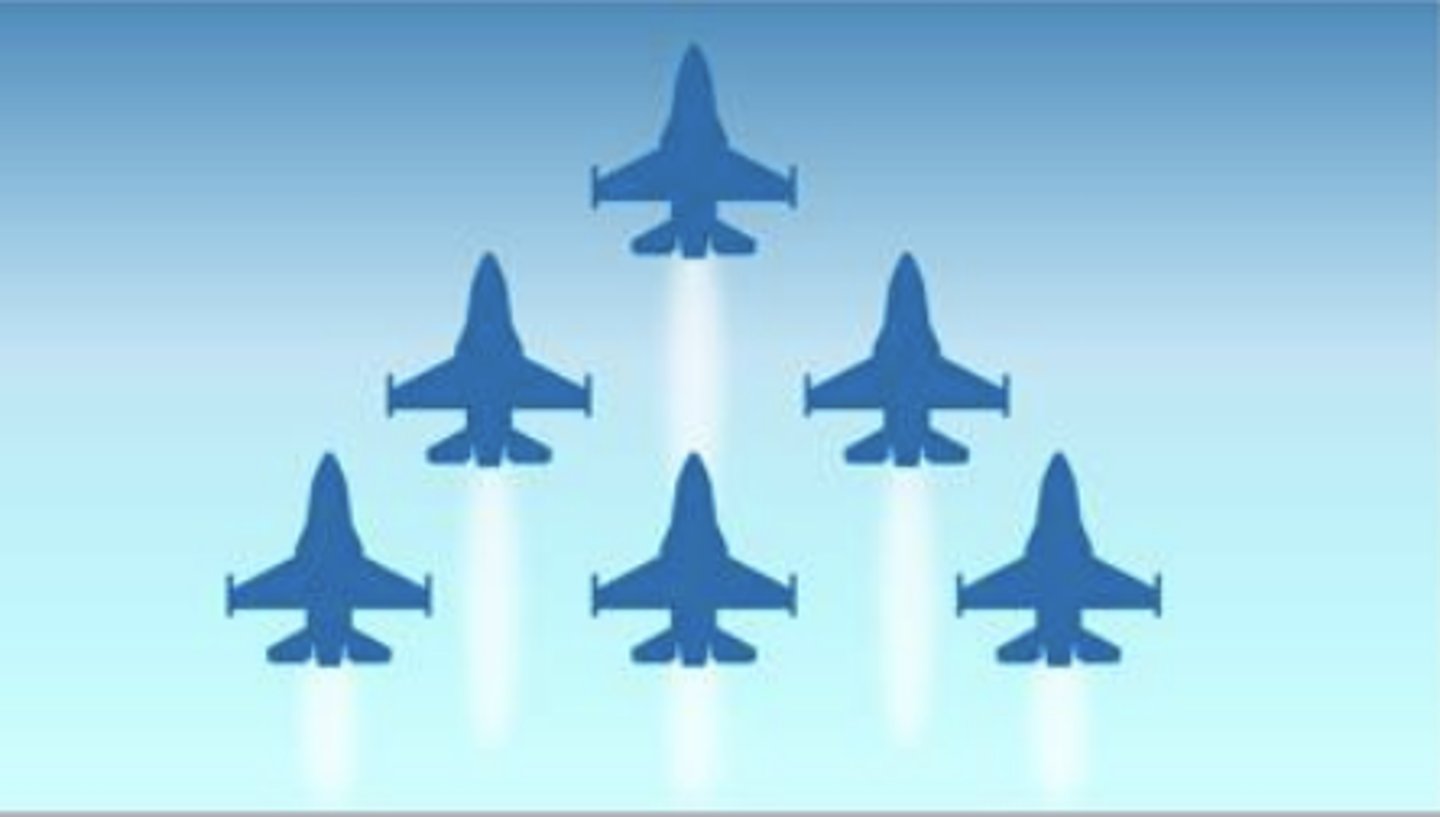
Towing
- CAR 602.22. Towing requires a tow hook and a release-control mechanism.
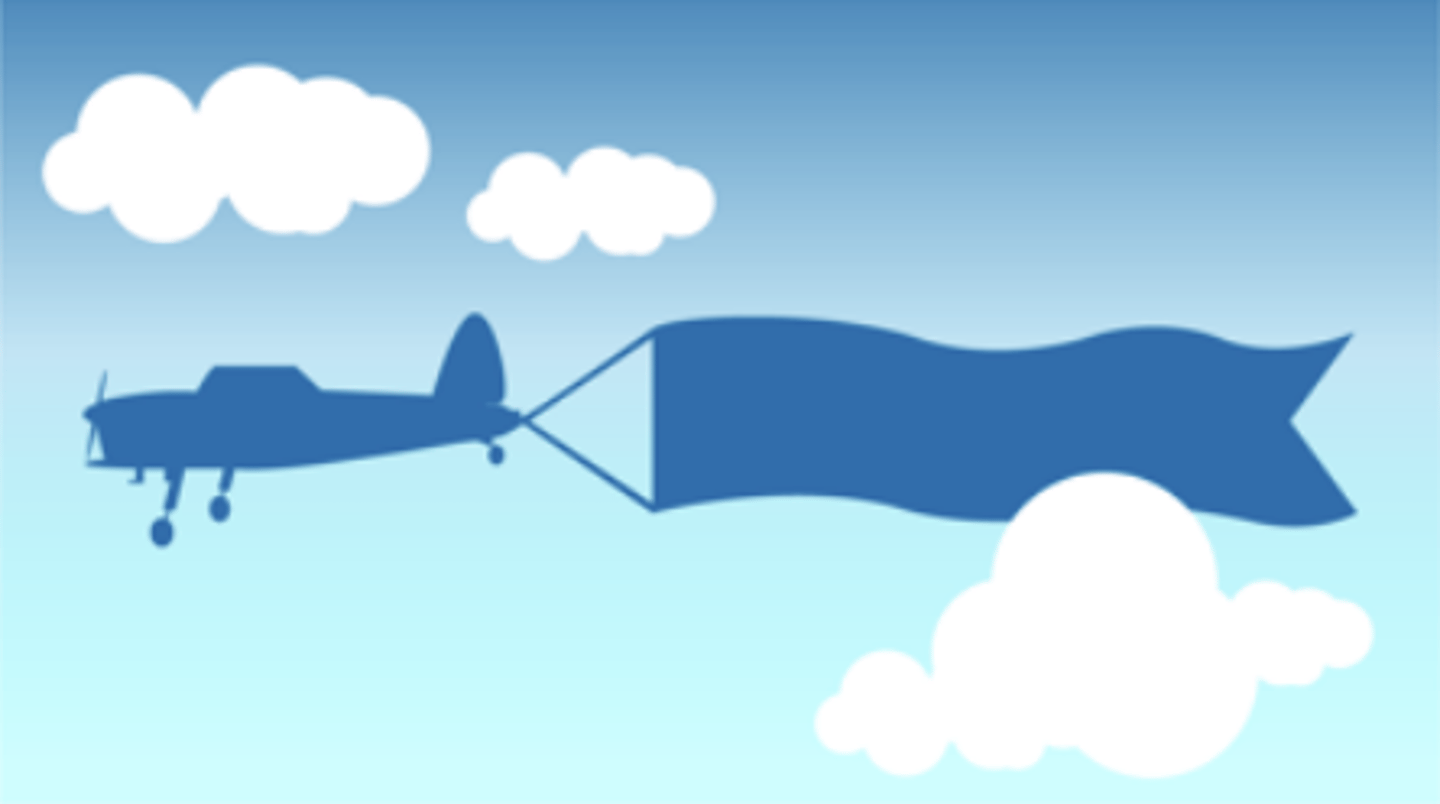
Aerobatic Manoeuvres
When a change in an aircraft's attitude results in:
- A bank angle greater than 60 degrees.
- An abnormal attitude.
- An abnormal acceleration relative to normal flying.
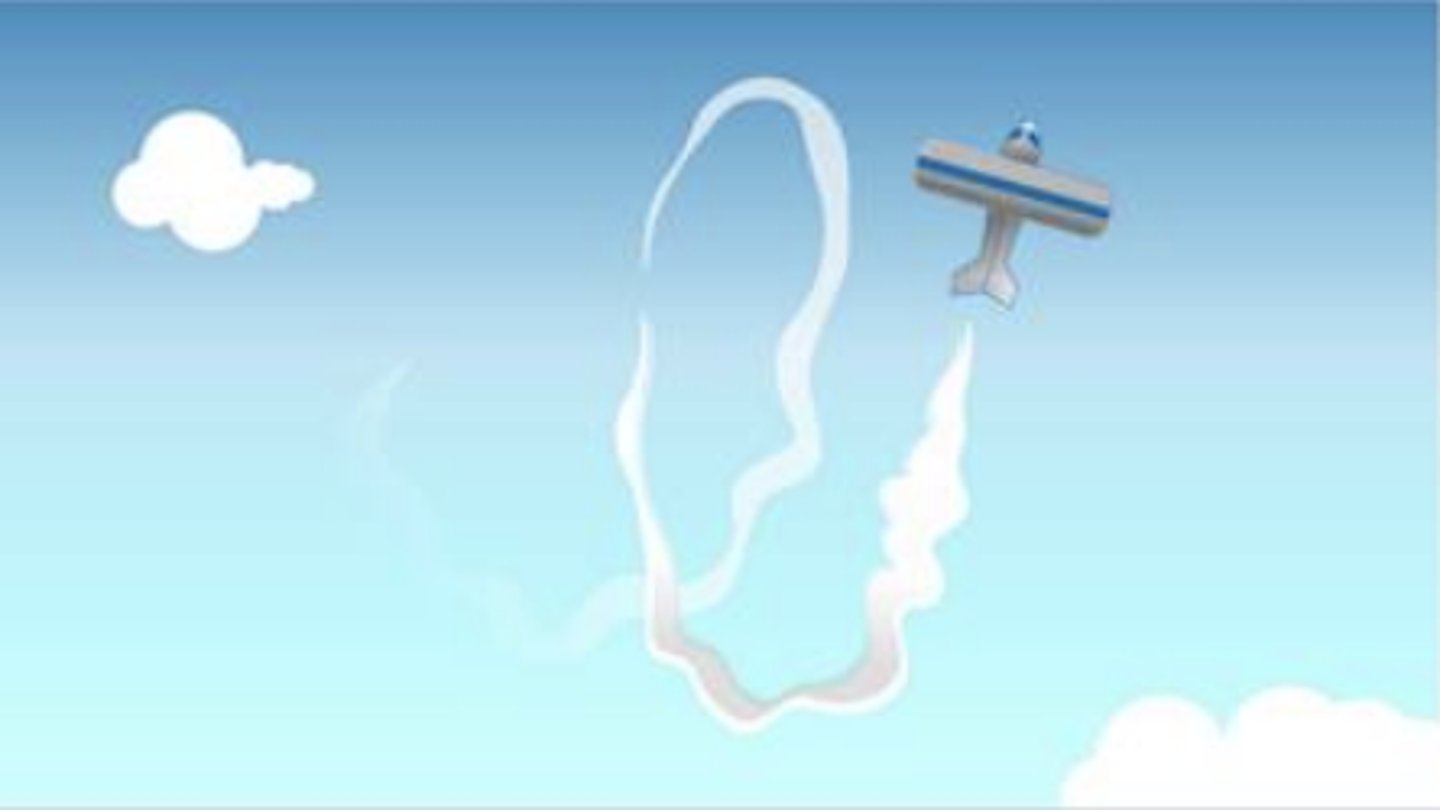
Aerobatic Restrictions
- According to CAR 602.27.
- Over a built-up area or an open-air assembly of people.
- When flight visibility is less than 3 miles.
- Below 2000 feet above ground level, unless the pilot possesses a special flight operations certificate.
- In any class of airspace that requires radio contact with air traffic services, unless the unit providing air traffic services is advised that aerobatic manoeuvres will be conducted.
- In Class A, B, or C airspace or Class D control zones without prior co-ordination between the pilot-in-command and the air traffic control unit for that airspace.
Parachute Descent Restrictions
- CAR 602.26. Without authorization from the Minister, pilots are restricted from parachute descents:
-- In or into controlled airspace or an air route.
-- Over or into a built-up area.
-- Over or into an open-air assembly of people.
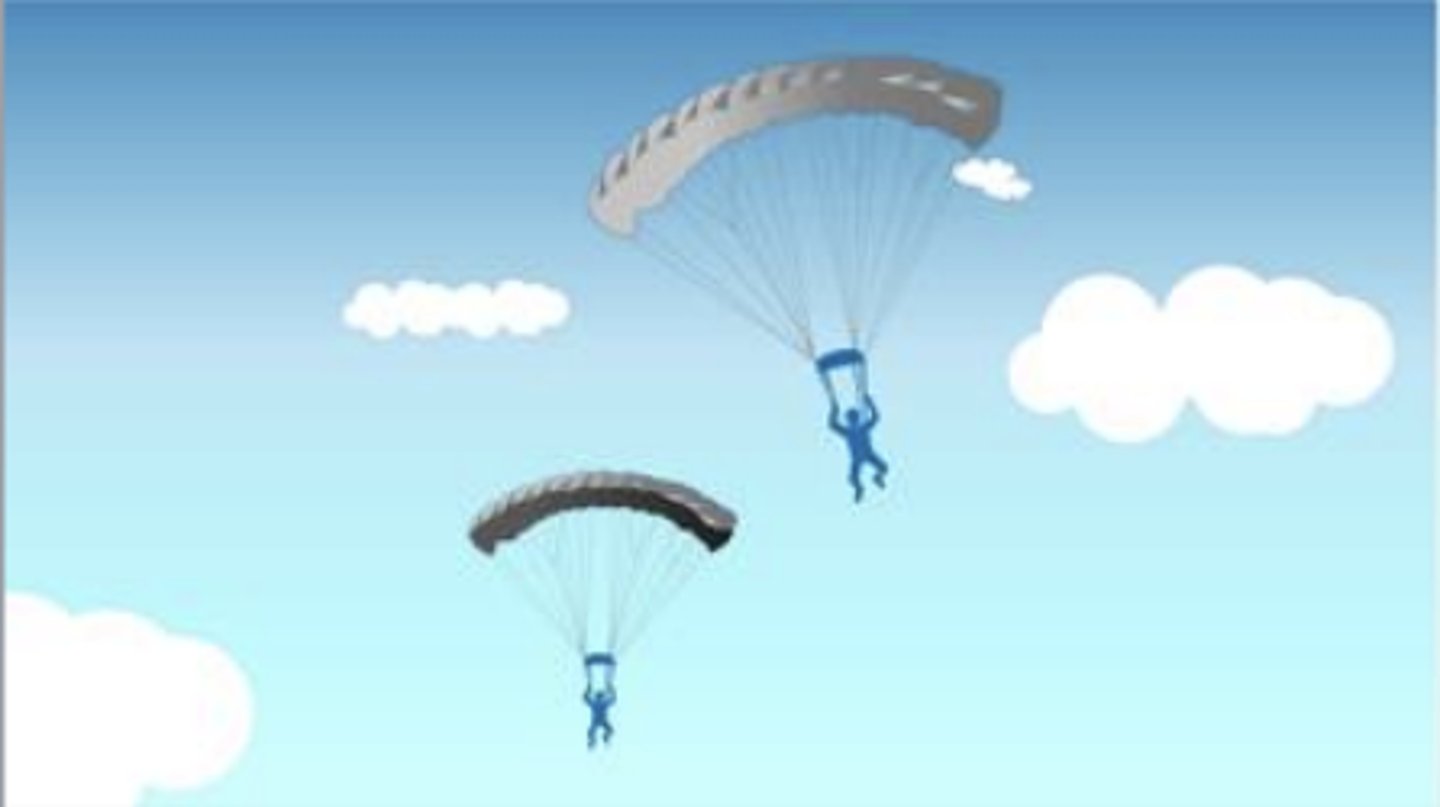
Canadian Domestic Airspace (CDA)
Includes all airspace over the Canadian land mass, the Canadian Arctic and Canadian archipelago, and over areas of the high seas within the airspace boundaries.
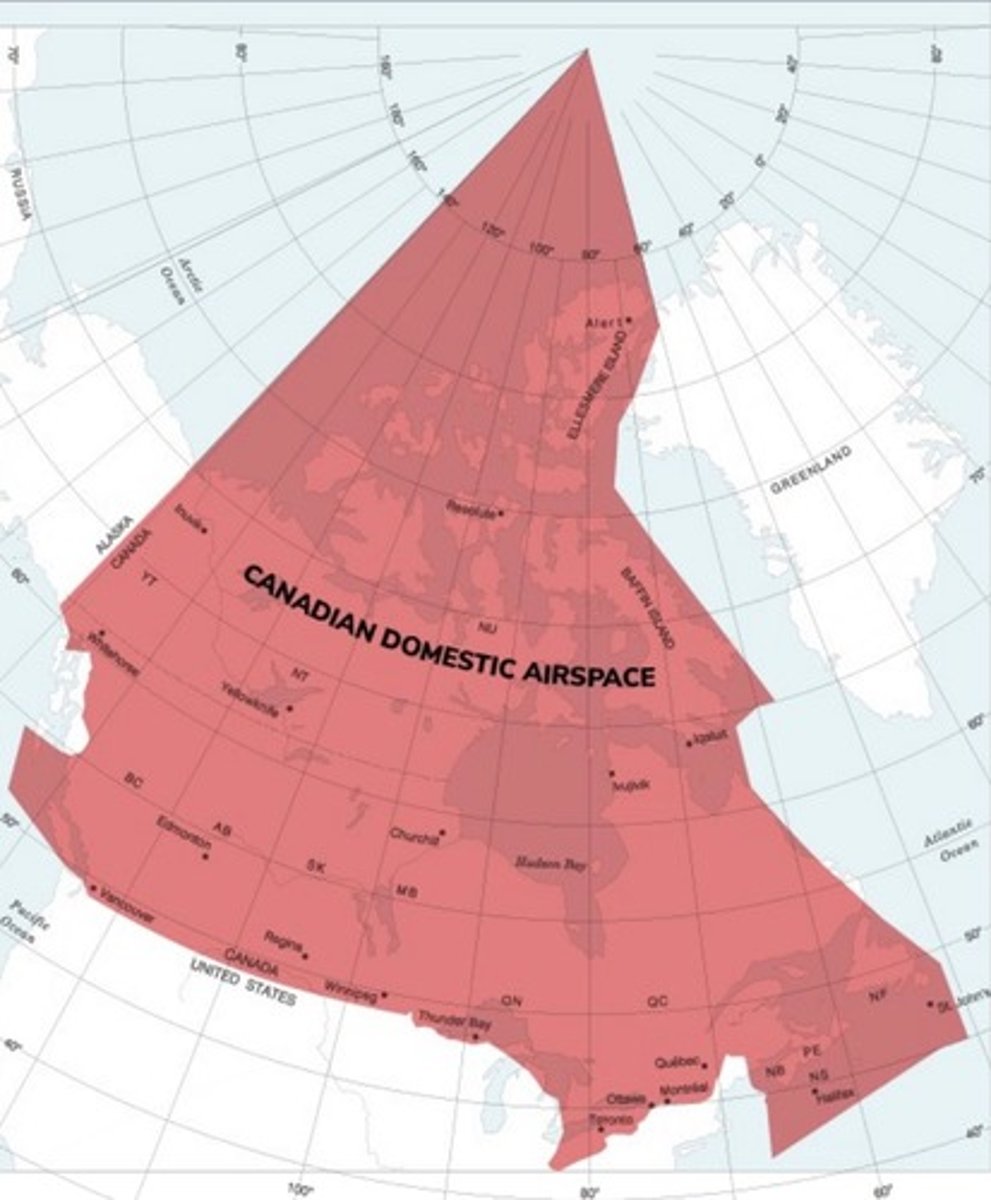
The CDA is divided laterally into what?
- Northern Domestic Airspace (NDA)
- Southern Domestic Airspace (SDA)
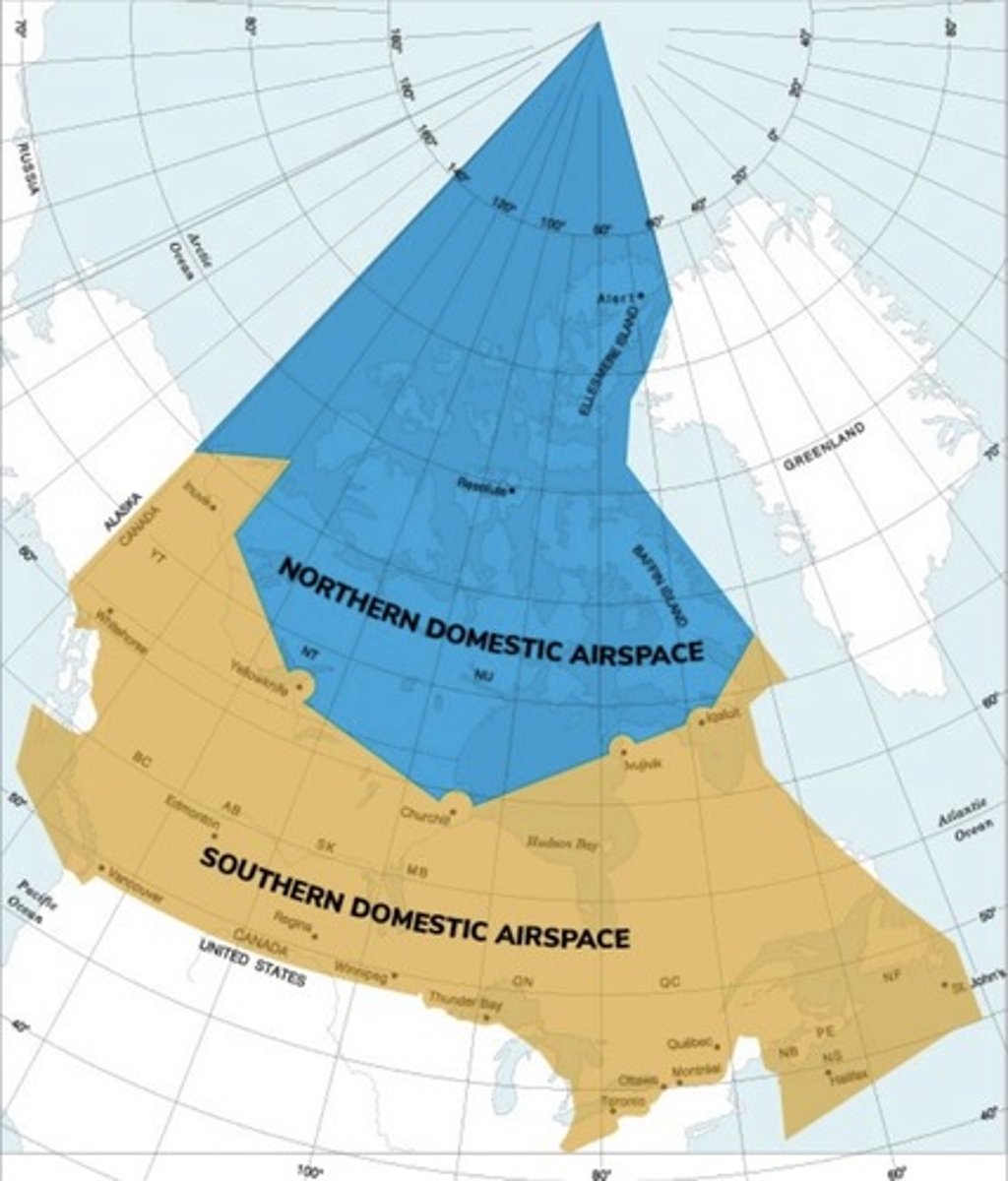
The CDA is also divided vertically into what?
- High-level airspace (18 000 feet ASL and above)
- Low-level airspace (below 18 000 feet ASL)
High-level airspace is divided into what three separate areas of controlled airspace?
- Arctic Control Area (ACA) within the NDA at FL270 and above
- Northern Control Area (NCA) within the NDA at FL230 and above
- Southern Control Area (SCA) within the SDA at 18 000 feet ASL and above
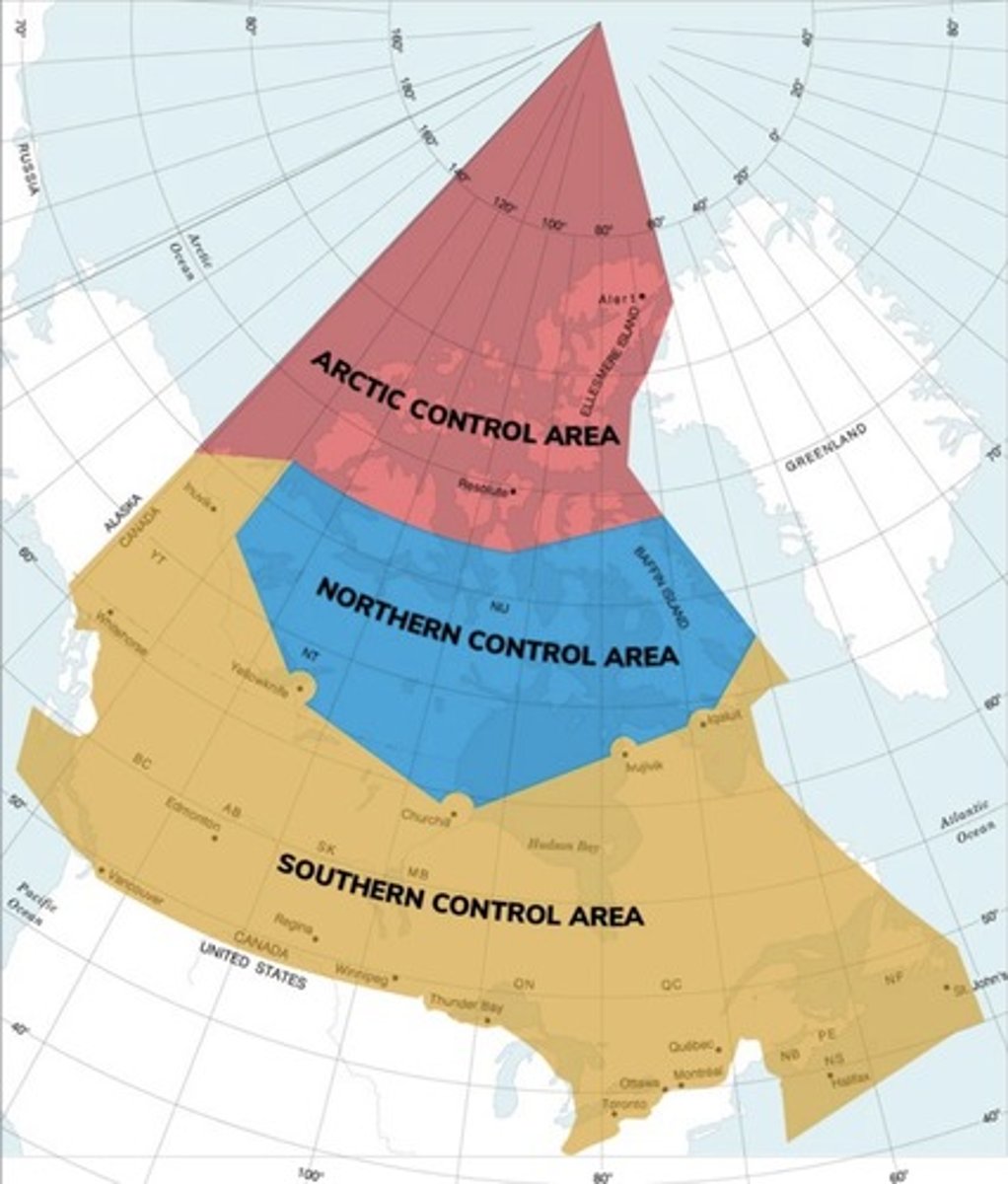
Airspace Structure
- Class A (Altitude: 18 000 or above - IFR only)
- Class B (Between 12 500 and 17 999 - IFR and CVFR)
- Class C (Clearance required)
- Class D (Dialogue required)
- Class E (Easy for VFR - IFR separation only)
- Class F (Fancy airspace - advisory, restricted, and danger)
- Class G (General airspace - uncontrolled)
Class A
- Only IFR aircraft are permitted (VFR aircraft are not permitted).
- All aircraft are subject to ATC clearance and instruction.
- ATC separation is provided to all aircraft.
- Aircraft must be equipped with a transponder (surveillance identification equipment) and automatic pressure altitude reporting equipment (e.g., an altimeter).
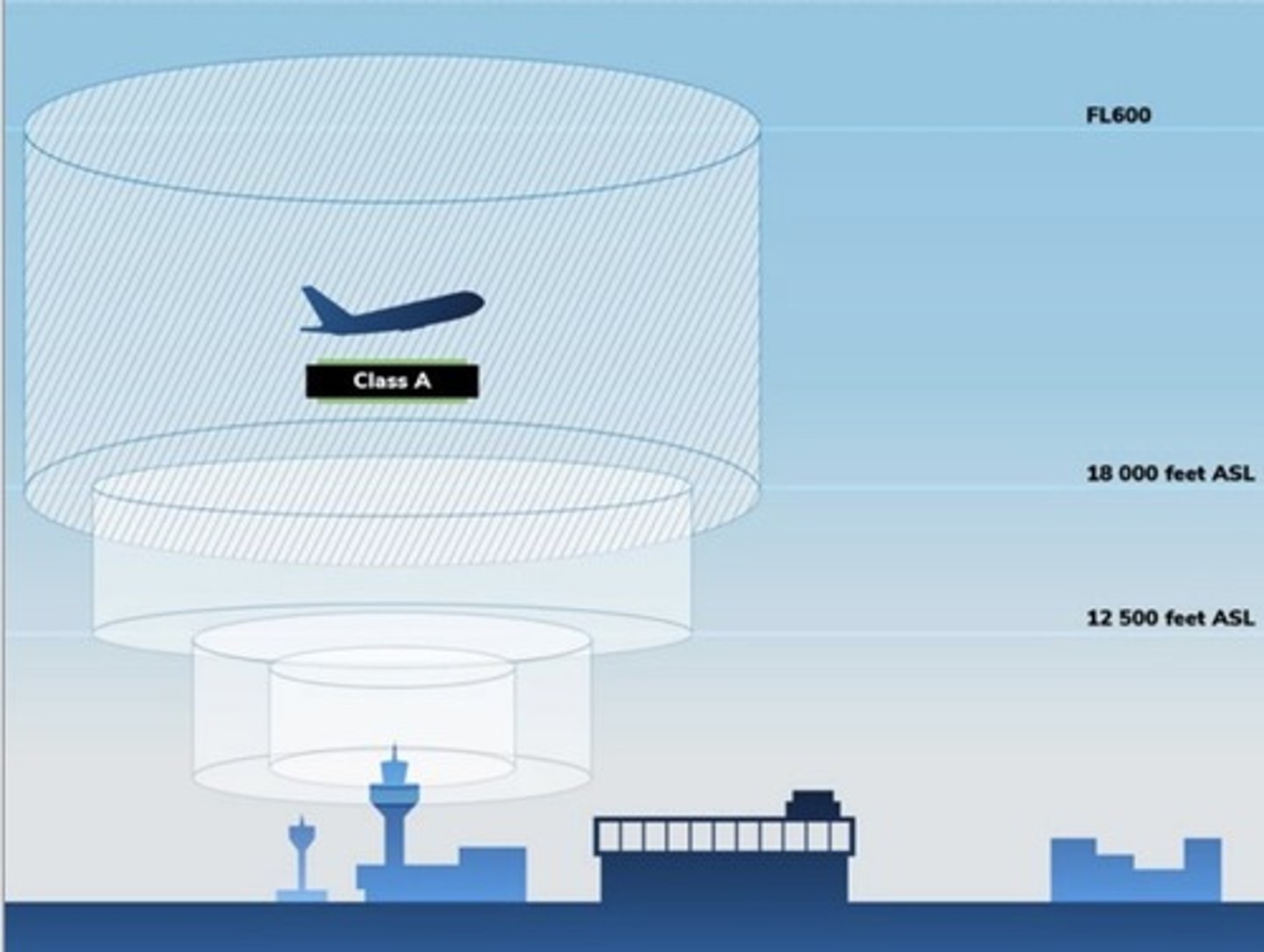
Class B
- Primarily for IFR, but VFR flights are permitted.
- All aircraft are subject to ATC clearance and instructions.
- ATC separation is provided to all aircraft.
- VFR aircraft must have specific equipment on board.
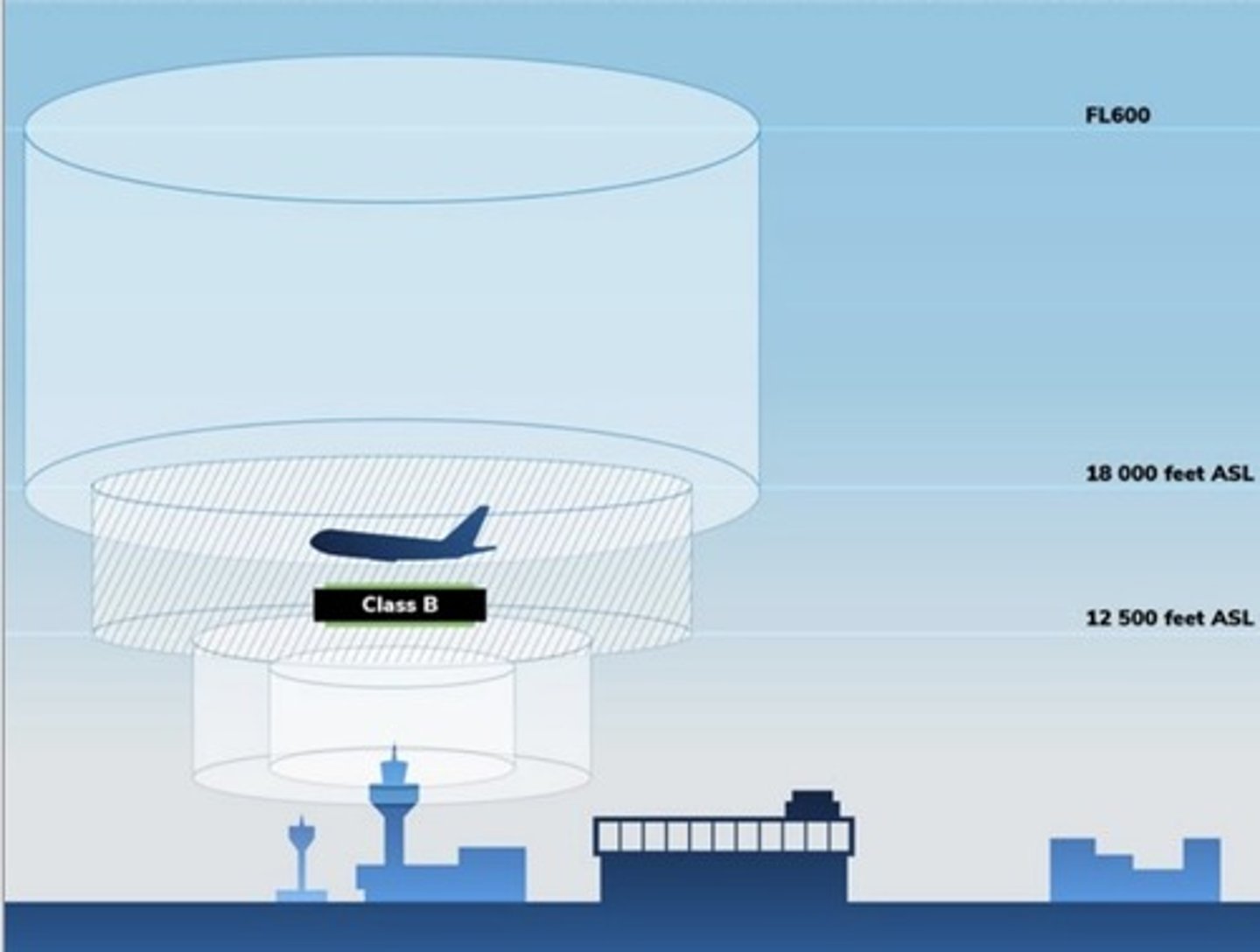
Class C
- Both IFR and VFR flights are permitted.
- VFR flights require ATC clearance to enter Class C airspace.
- ATC separation is provided to all IFR aircraft.
- All aircraft are provided with air traffic information (position and intended route of other air traffic in proximity).
- ATC will provide conflict resolution between IFR and VFR flights as necessary, and between VFR flights upon request, after traffic information has been provided.
- VFR aircraft must have specific equipment on board.
- Class C airspace becomes Class E airspace if the appropriate ATC unit is not in operation.
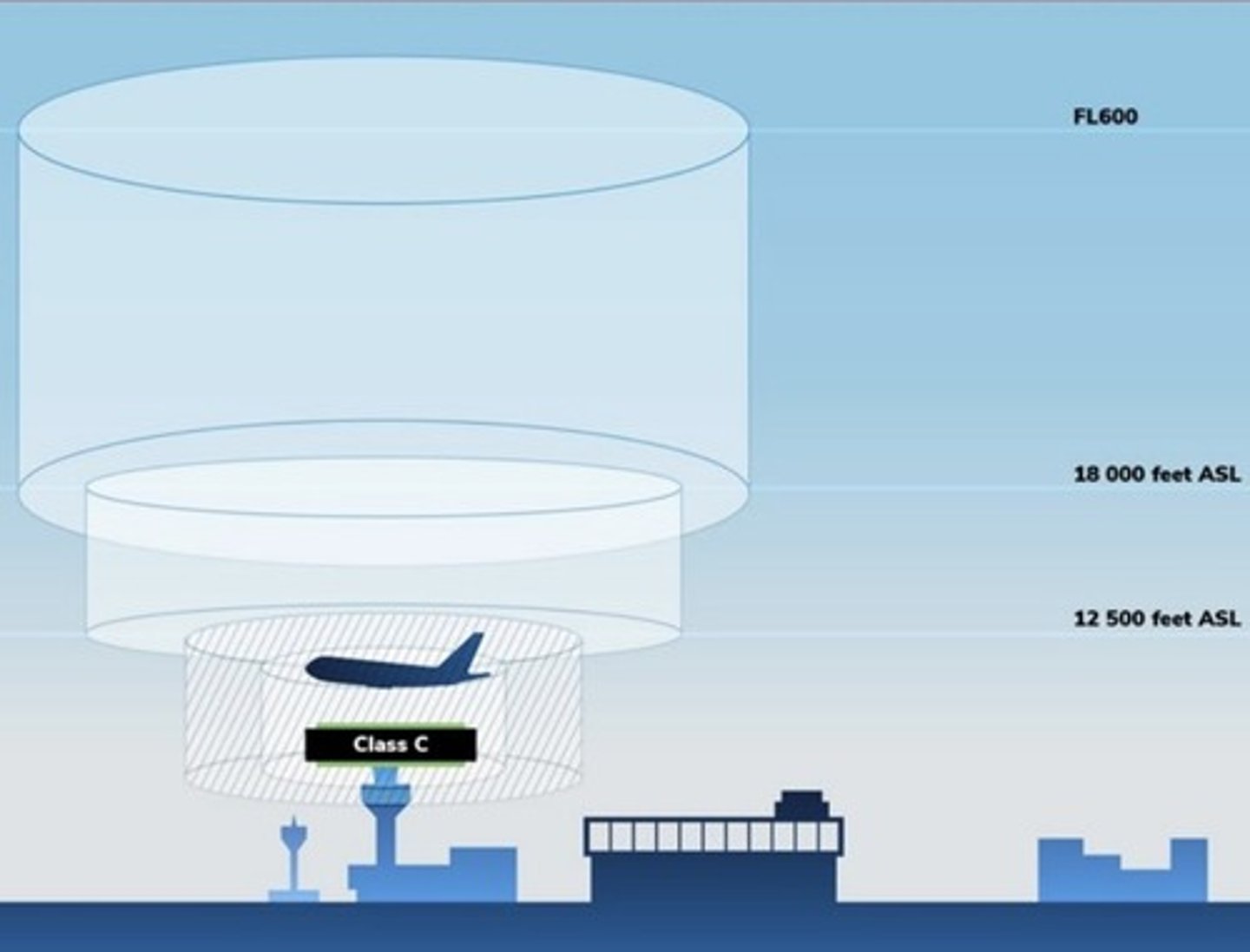
Class D
- Both IFR and VFR flights are permitted.
- VFR flights do not require ATC clearance to enter Class D airspace provided they have required equipment.
- All aircraft, including VFR aircraft, must be equipped with a transponder and automatic pressure altitude equipment in areas designated transponder airspace.
- VFR flights must establish two-way communication with the appropriate ATC agency prior to entering Class D airspace.
- ATC separation is provided to all IFR aircraft.
- All aircraft are provided with air traffic information.
- ATC provides conflict resolution between IFR and VFR flights, and between VFR flights upon request (equipment permitting).
- Class D airspace becomes Class E airspace if the appropriate ATC unit is not in operation.
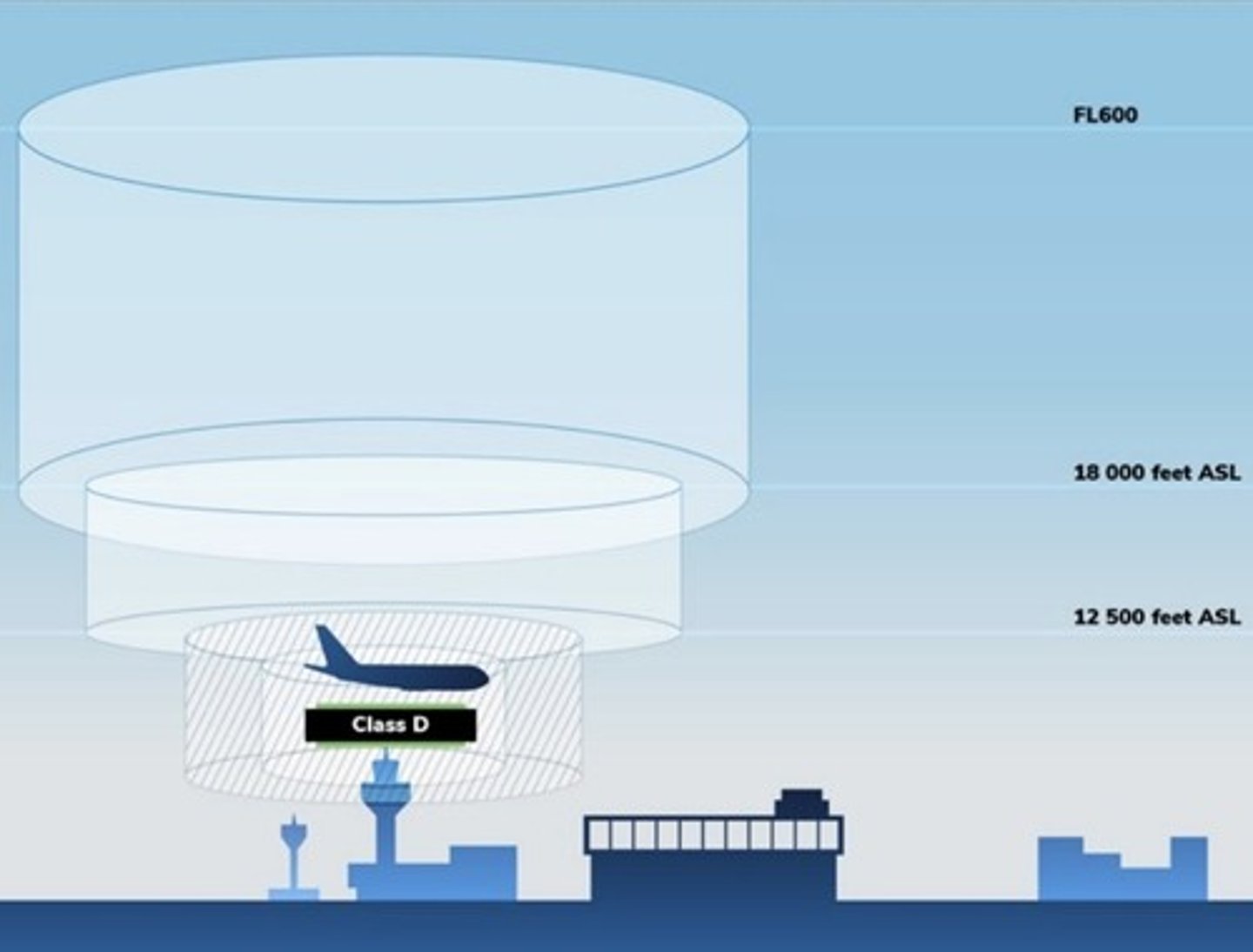
Class E
- Both IFR and VFR aircraft are permitted.
- ATC separation is provided only to IFR aircraft.
- All aircraft, including VFR aircraft, must be equipped with a transponder and automatic pressure altitude equipment in areas designated as transponder airspace.
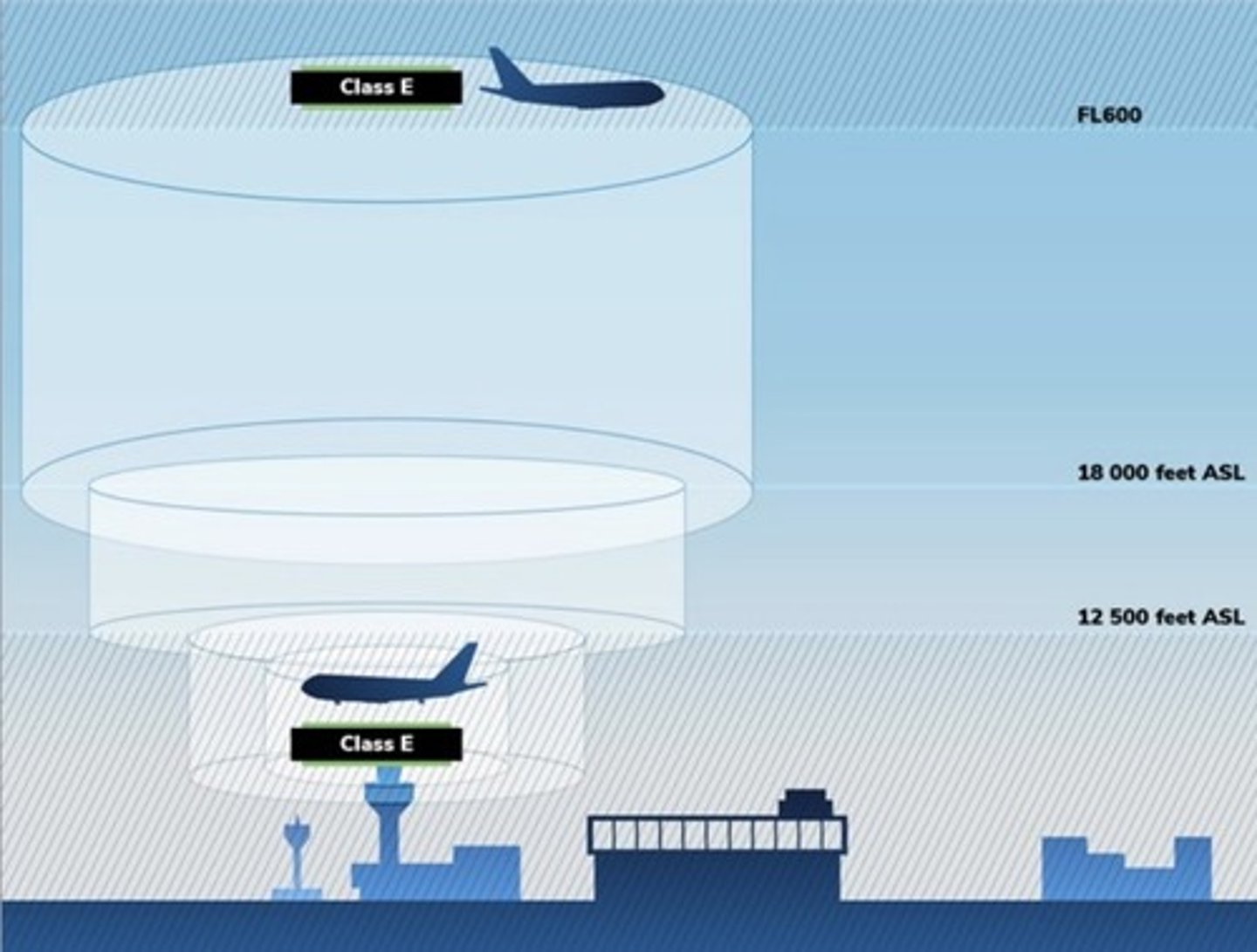
Class F
- Flight rules for all flights are defined by the specialized activities being conducted.
- When Class F airspace is inactive, the rules of the surrounding airspace apply.
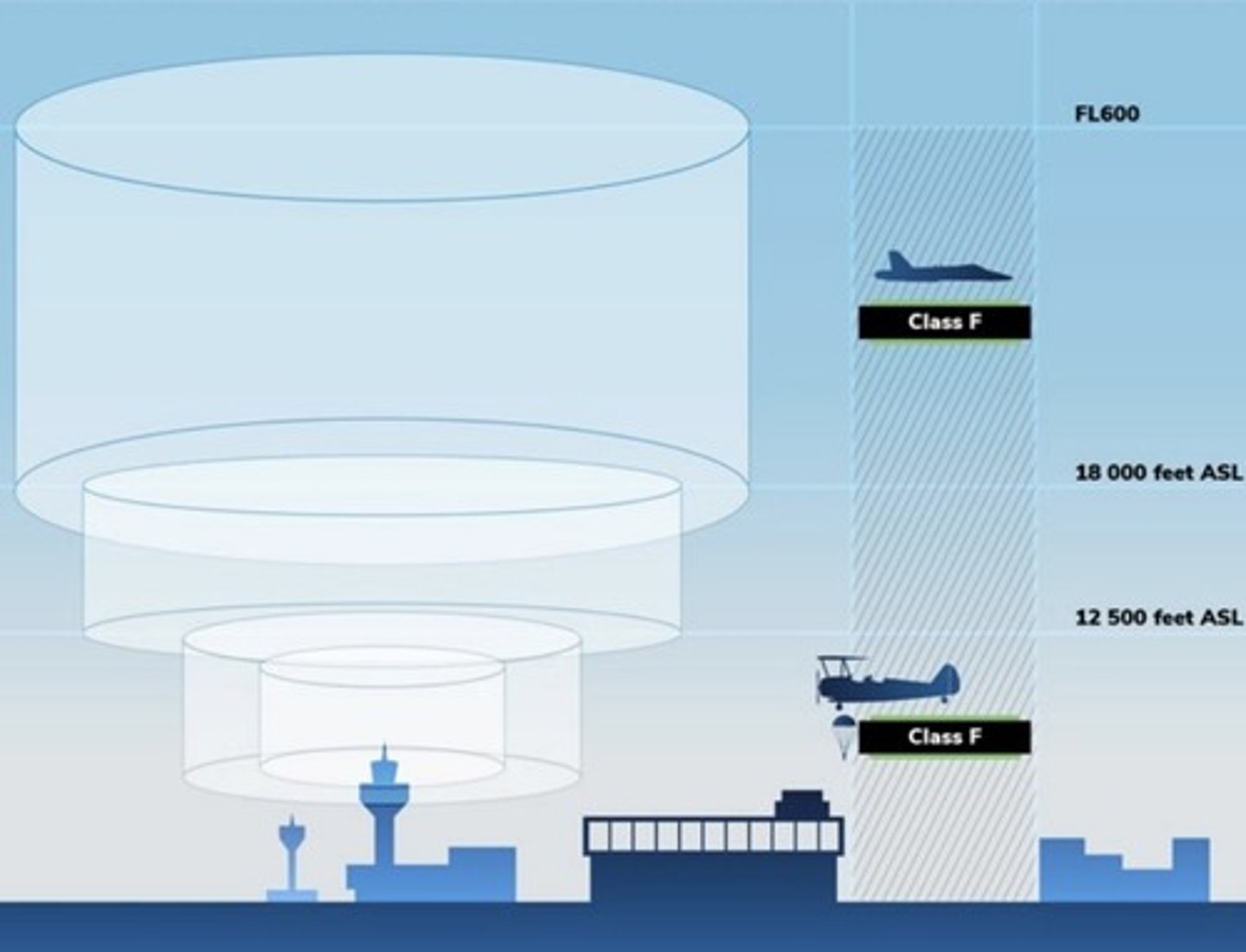
Class G
- No ATC services are provided; ATC has neither the authority nor responsibility for control over air traffic in Class G airspace.
- Flight information services (like weather updates) and alerting services are provided.
- There are no special requirements for VFR flights.
